Organic modern interior design represents the perfect marriage between contemporary minimalism and nature's timeless appeal. This trending aesthetic transforms homes into serene sanctuaries that feel both sophisticated and warmly inviting. By seamlessly blending clean architectural lines with natural materials, curved furniture, and earthy color palettes, organic modern style creates spaces that nurture both body and soul. The movement draws inspiration from our innate connection to the natural world, incorporating elements like raw wood textures, sculptural lighting, and biophilic design principles. Unlike stark minimalism, organic modern embraces warmth through tactile materials such as linen, stone, and handcrafted ceramics. This design philosophy emphasizes sustainability while maintaining elegant sophistication, making it particularly relevant for today's environmentally conscious homeowners seeking comfort without sacrificing style.
1. Curved Seating With Natural Textures
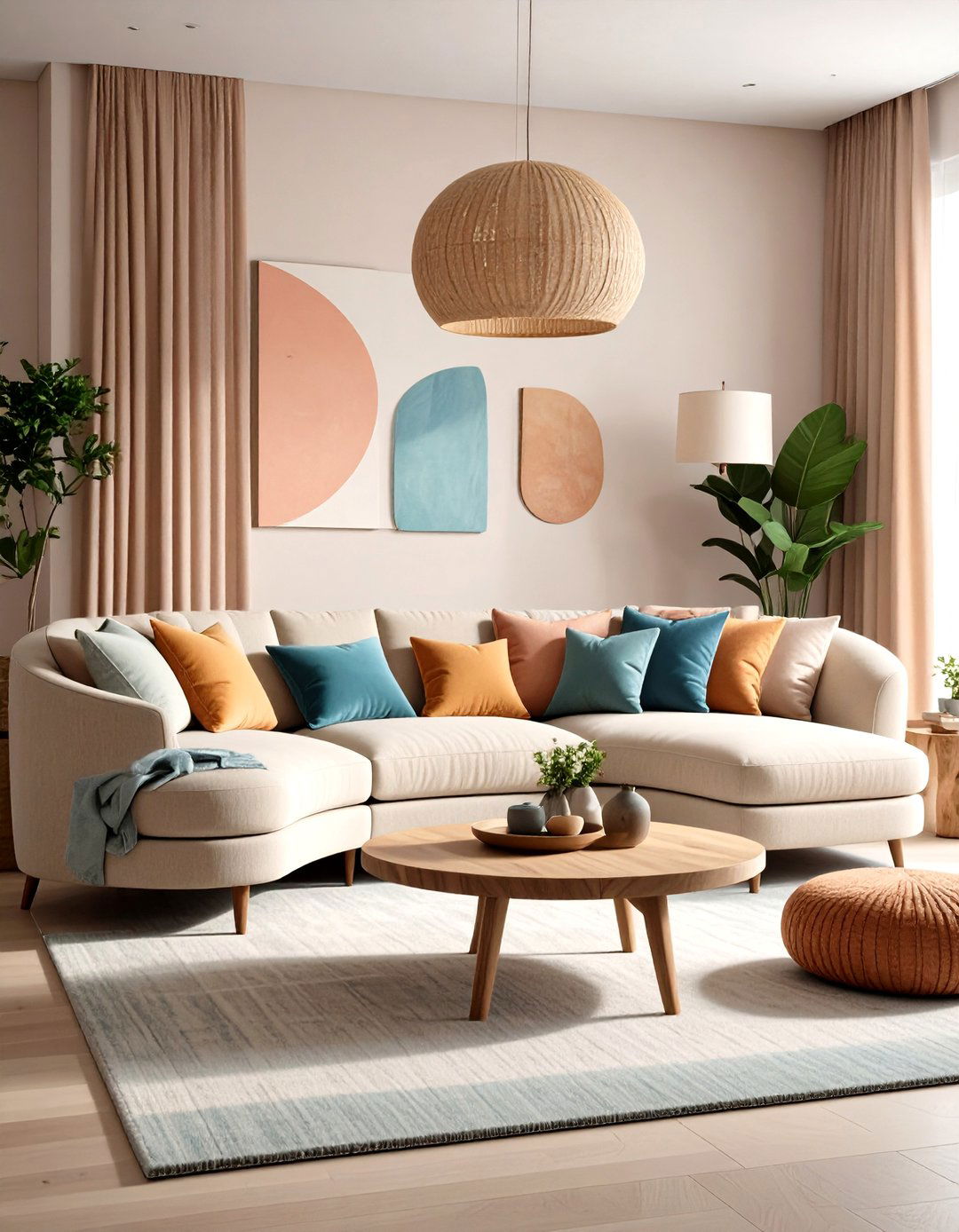
Transform your living space with curved sofas and armchairs that embrace organic shapes. These flowing furniture pieces soften harsh architectural lines while creating inviting conversation areas. Choose upholstery in natural materials like bouclé, linen, or wool in warm neutral tones. The rounded forms naturally encourage relaxation and social interaction. Pair curved seating with straight-lined coffee tables for perfect balance. Consider sectionals with gentle curves that can define spaces in open floor plans. Natural fiber throws and pillows in earthy textures enhance the organic appeal. These sculptural seating options serve as focal points while maintaining the clean aesthetic essential to modern design principles.
2. Natural Stone Kitchen Islands
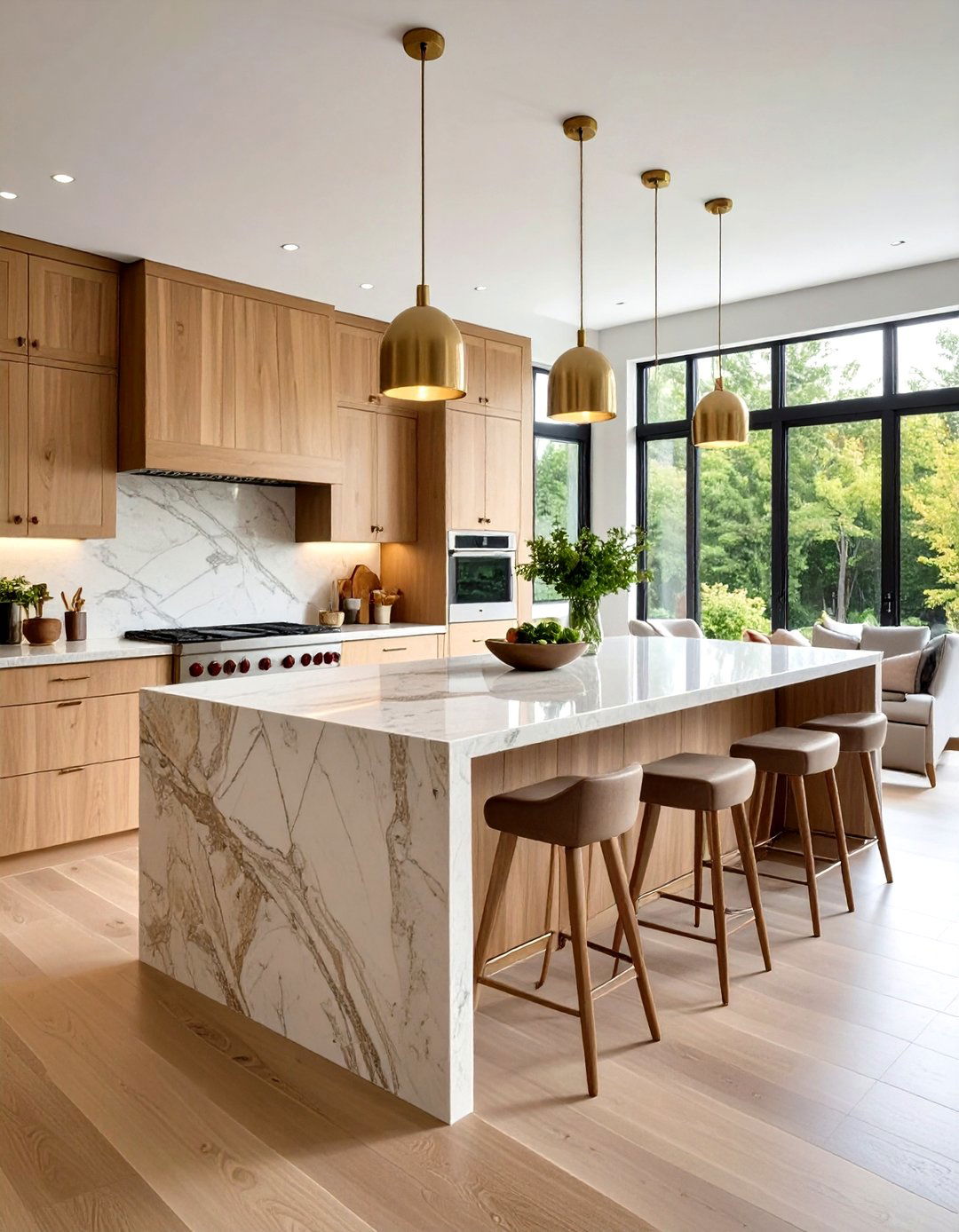
Can natural stone truly transform your kitchen into an organic modern masterpiece? Absolutely. Stone kitchen islands featuring materials like travertine, marble, or quartzite create stunning focal points that celebrate nature's artistry. The veining and texture variations in natural stone provide visual interest without overwhelming the space. These substantial surfaces pair beautifully with warm wood cabinetry and brass hardware. Consider waterfall edges that showcase the stone's natural patterns. Pendant lighting with organic shapes complements the earthy materials. The durability and timeless appeal of stone ensures your investment remains stylish for decades. Natural stone islands ground kitchen designs while adding sophisticated luxury that feels authentically organic.
3. Biophilic Living Room Gardens
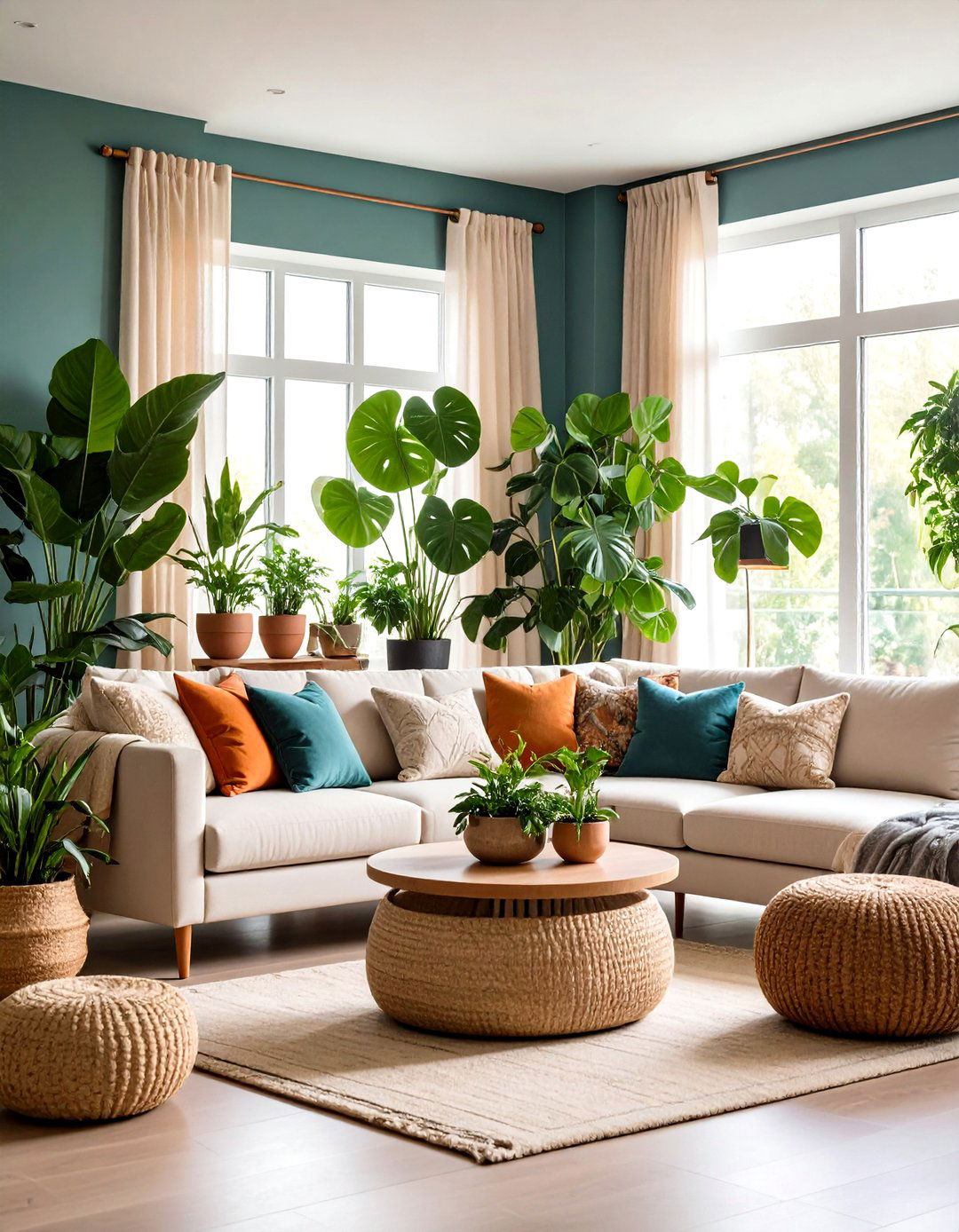
Indoor plants serve as living sculptures in organic modern living rooms. Create layered greenery displays using plants of varying heights and textures, from towering fiddle leaf figs to delicate trailing pothos. Natural fiber baskets and ceramic planters in earth tones complement the organic aesthetic. Strategic placement near windows maximizes natural light benefits. Consider plant walls or hanging gardens for dramatic vertical interest. The air-purifying qualities of plants enhance wellness while adding vibrant natural color. Mix foliage types to create visual depth and seasonal interest. These living elements connect indoor spaces to nature while maintaining the clean, uncluttered principles of modern design.
4. Warm Wood Ceiling Treatments
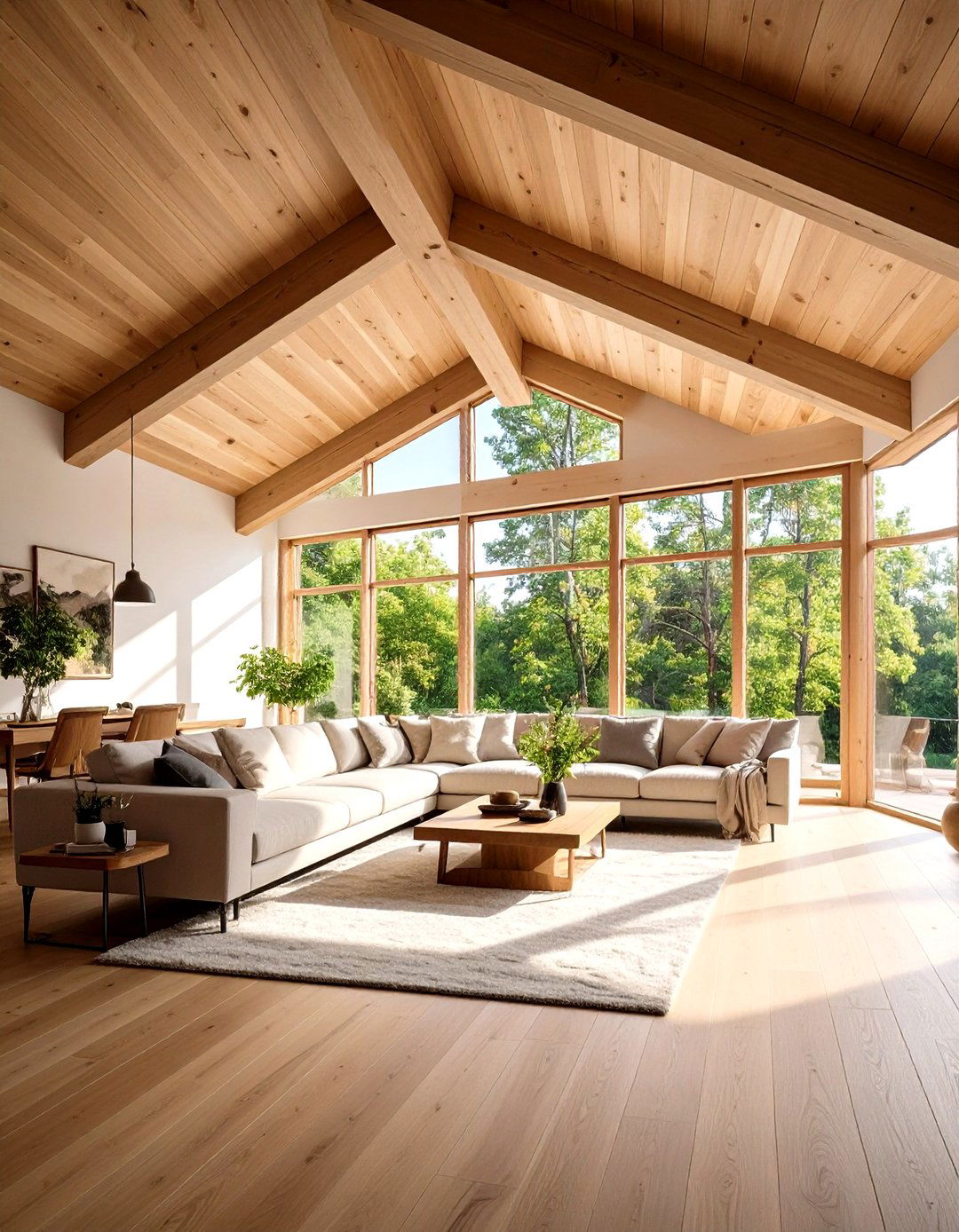
Wood ceiling treatments bring warmth and natural texture overhead in organic modern spaces. Exposed beams, planked ceilings, or geometric wood patterns create architectural interest while maintaining clean lines. Choose lighter wood tones like oak or maple for airiness, or rich walnut for dramatic sophistication. The natural grain patterns add organic movement to otherwise static surfaces. These treatments work particularly well in living rooms and bedrooms where comfort is paramount. Consider tongue-and-groove planking for subtle texture or more dramatic beam configurations for statement appeal. Wood ceilings complement neutral wall colors while adding the warmth that distinguishes organic modern from stark minimalism.
5. Sculptural Pendant Lighting
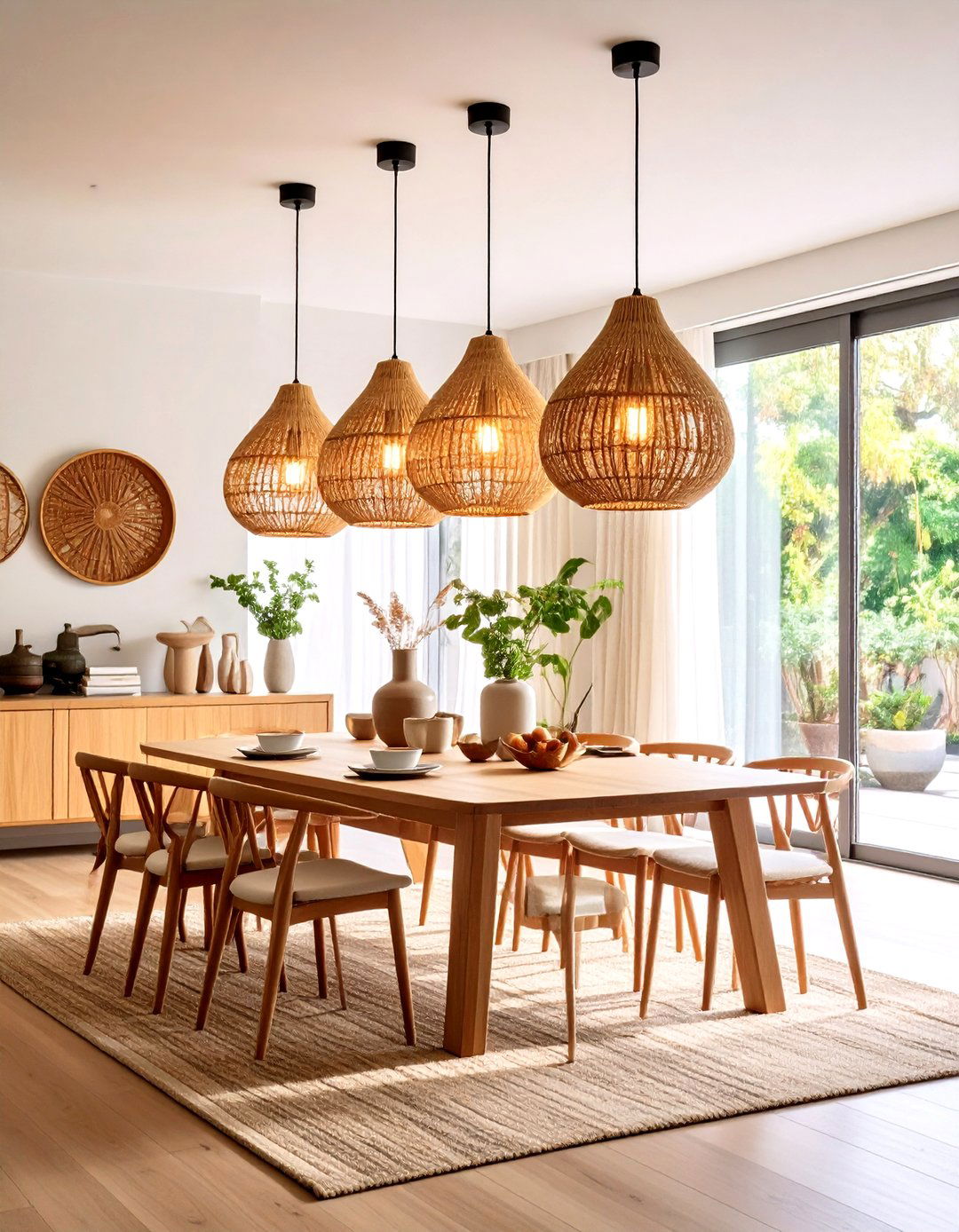
How can lighting serve as functional art in your organic modern space? Sculptural pendant lights featuring curved forms, natural materials, and asymmetrical shapes create stunning visual anchors. Choose fixtures crafted from materials like rattan, ceramic, or blown glass that echo nature's forms. Multiple pendants of varying heights add dynamic visual interest over kitchen islands or dining tables. The organic shapes cast beautiful shadow patterns that change throughout the day. Natural material pendants like woven bamboo or carved wood bring textural warmth. These artistic lighting elements eliminate the need for additional artwork while providing essential ambient illumination that enhances the serene atmosphere.
6. Textured Neutral Wall Finishes
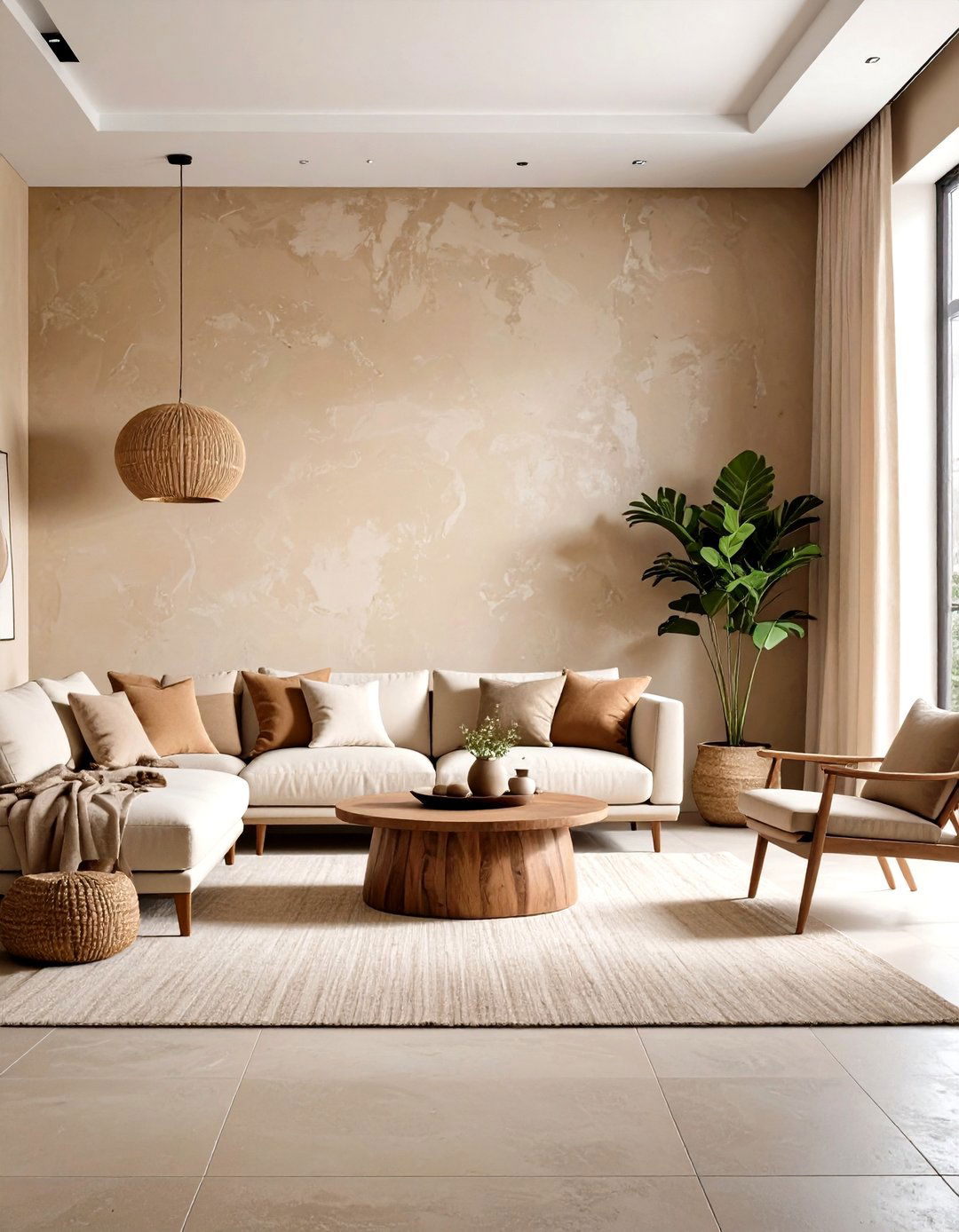
Textured wall treatments add tactile depth to organic modern interiors without disrupting clean aesthetic lines. Consider lime plaster, Venetian plaster, or natural clay finishes that create subtle surface variations. These organic textures catch and reflect light differently throughout the day, adding visual movement. Neutral tones like warm white, mushroom, or soft sage maintain the calming color palette. Hand-applied finishes celebrate imperfection as beauty, embracing organic irregularities. These treatments work particularly well as accent walls behind beds or in dining areas. The natural variations in texture create interest without patterns or bold colors, staying true to the understated elegance of organic modern design.
7. Live-Edge Wood Dining Tables
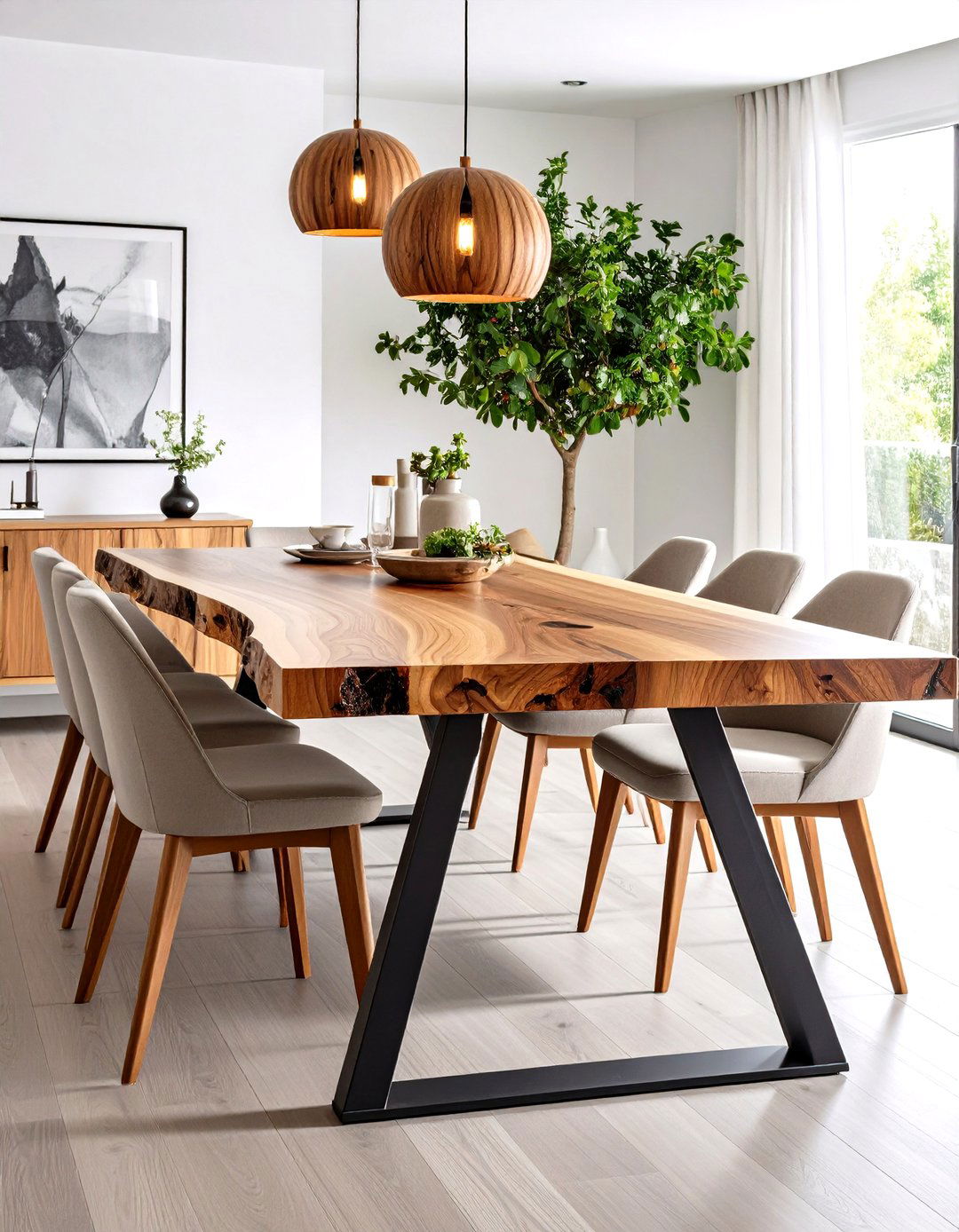
Live-edge dining tables celebrate nature's imperfect beauty while serving as dramatic focal points. These tables preserve the natural contours of tree trunks, showcasing unique grain patterns and organic shapes. The raw edges contrast beautifully with sleek metal legs or minimalist trestle bases. Each live-edge table is inherently unique, ensuring your dining space feels personalized and authentic. The substantial wood presence grounds the room while maintaining sophisticated appeal. Natural variations in color and texture make these pieces living artworks. Pair with modern dining chairs to balance rustic and contemporary elements. The sustainable aspect of using reclaimed wood aligns with organic modern's environmental consciousness.
8. Organic Modern Bedroom Sanctuaries
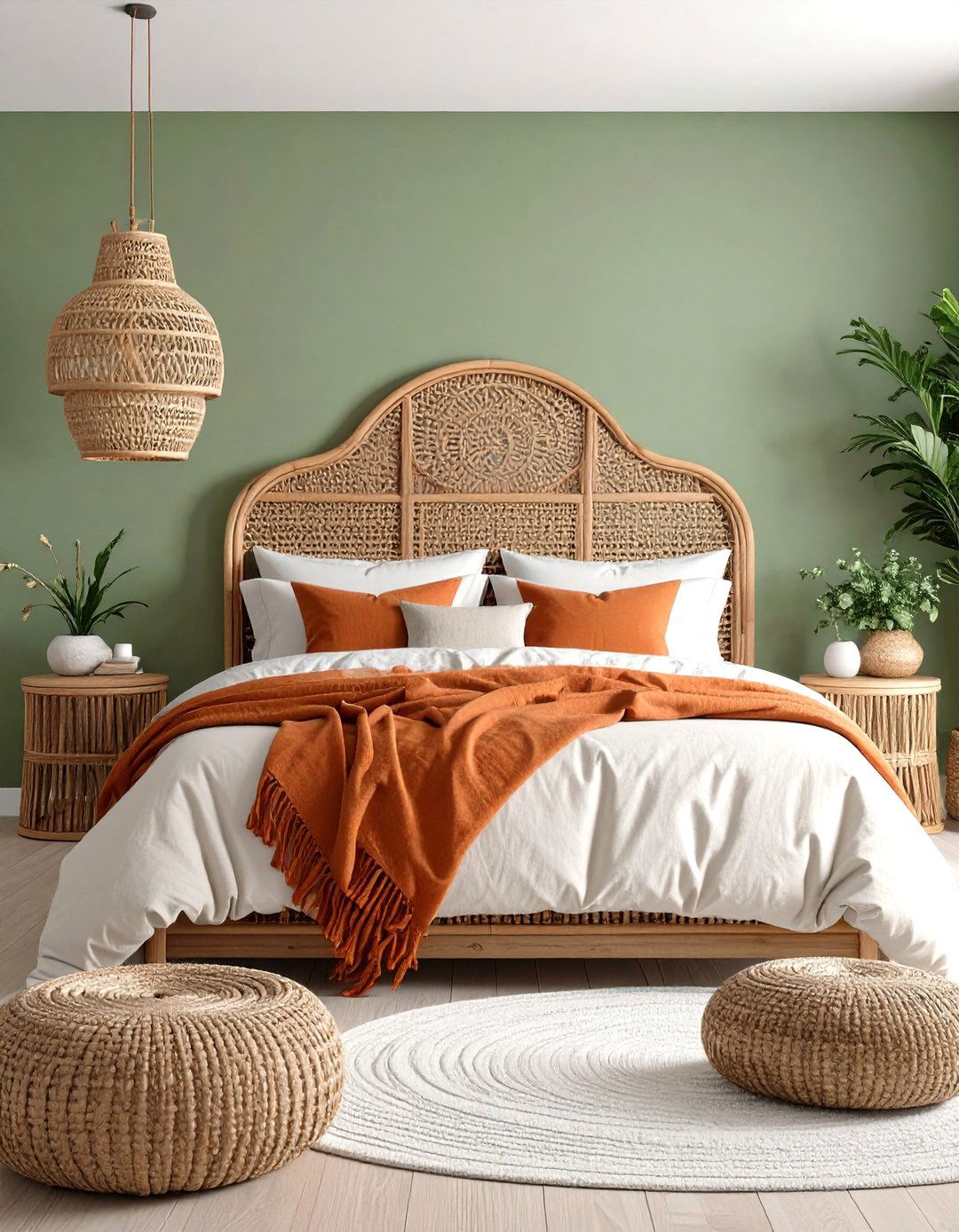
Create restful retreats using organic modern principles in bedroom design. Start with neutral bedding in natural fibers like linen or organic cotton. Add curved nightstands or platform beds with rounded corners to soften architectural edges. Natural materials like rattan headboards or wooden bed frames bring earthy warmth. Layer textures through wool throws, jute rugs, and ceramic accessories. Maintain minimal clutter while incorporating plants for air purification and natural beauty. Soft, warm lighting creates ambiance without harsh overhead fixtures. The key lies in balancing clean modern lines with organic textures and natural materials that promote relaxation and connection to nature.
9. Natural Fiber Area Rugs
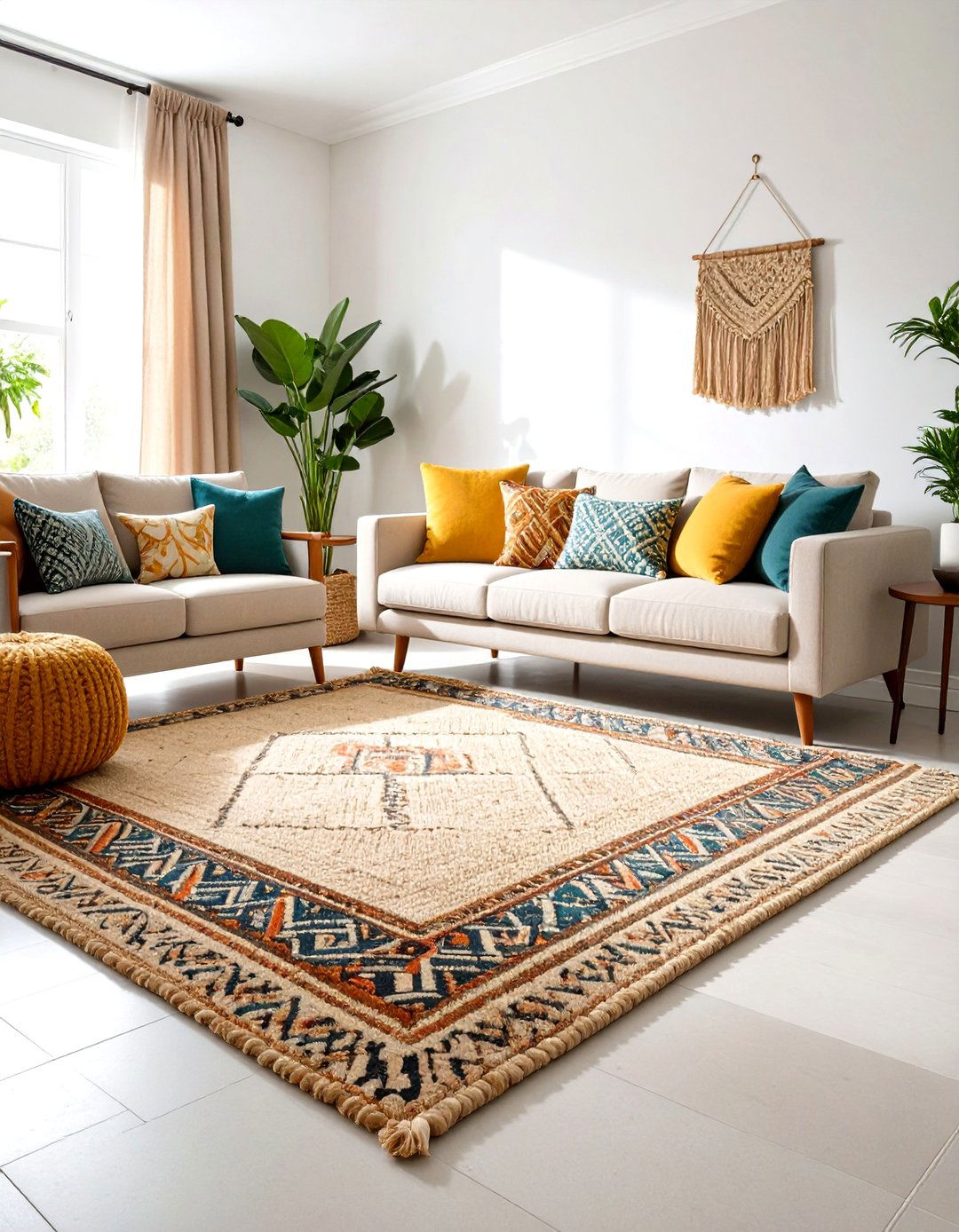
Ground your organic modern spaces with area rugs crafted from natural fibers. Jute, sisal, wool, and hemp rugs add essential texture while maintaining neutral color palettes. These materials provide durability and sustainability while connecting spaces to natural origins. Choose rugs with subtle patterns or solid colors that complement rather than compete with furniture. Layering smaller rugs creates visual interest and defines separate areas within open floor plans. The natural variations in fiber textures add tactile richness underfoot. These eco-friendly options align with organic modern's environmental values while providing practical benefits like sound absorption and floor protection in high-traffic areas.
10. Curved Kitchen Cabinetry Details
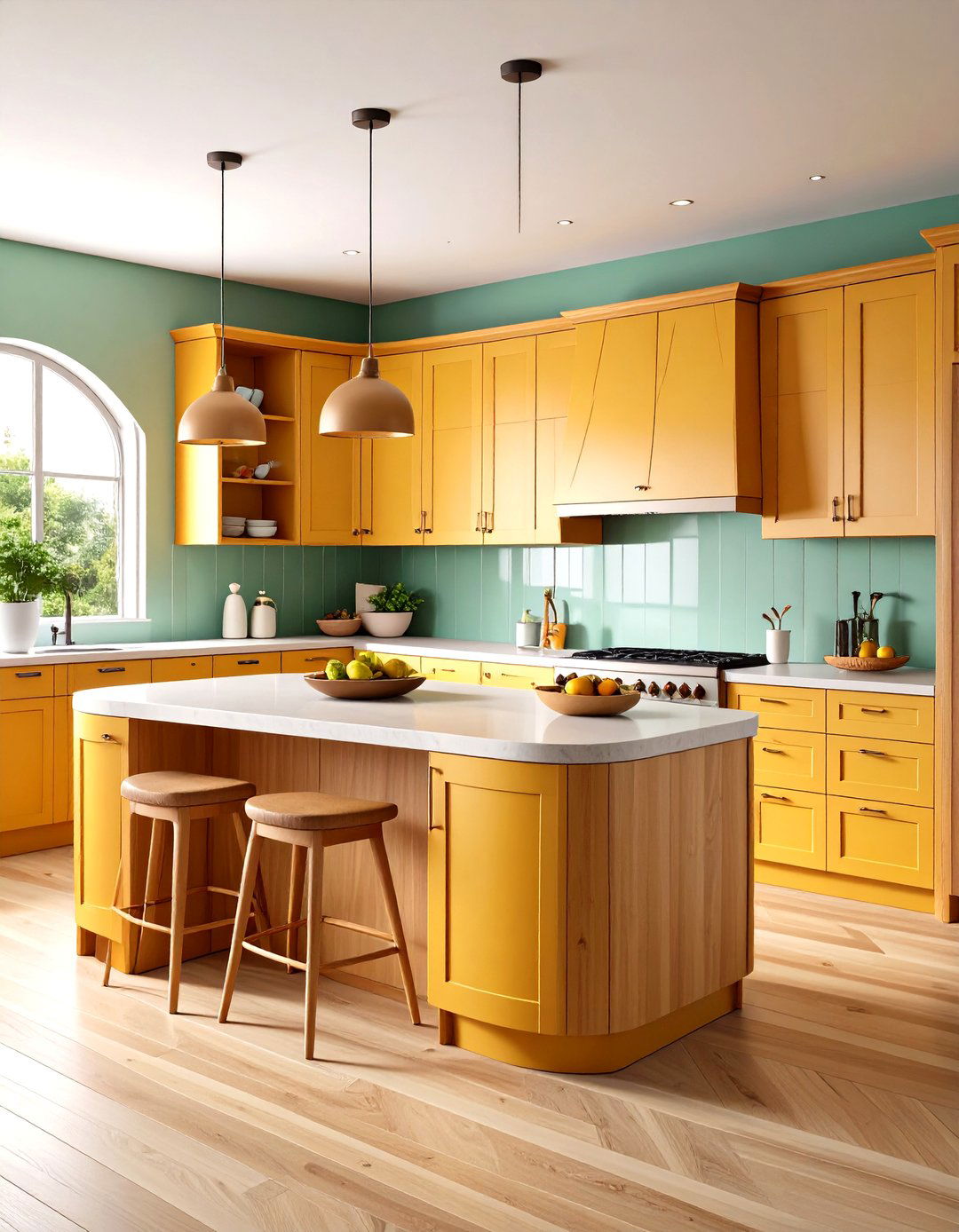
Why settle for traditional boxy kitchen cabinets when organic curves can transform your culinary space? Incorporate curved cabinet ends, rounded island corners, or arched cabinet doors to soften kitchen geometry. These organic details create visual flow while maintaining functional storage. Natural wood finishes enhance the organic appeal, while painted cabinets in warm whites or sage tones keep spaces feeling fresh. Curved details work particularly well at kitchen peninsulas or breakfast bar ends. The flowing lines create better traffic patterns and prevent sharp corner injuries. These thoughtful design elements distinguish your kitchen from standard rectangular layouts while embracing the organic modern aesthetic's emphasis on natural, flowing forms.
11. Natural Stone Bathroom Vanities
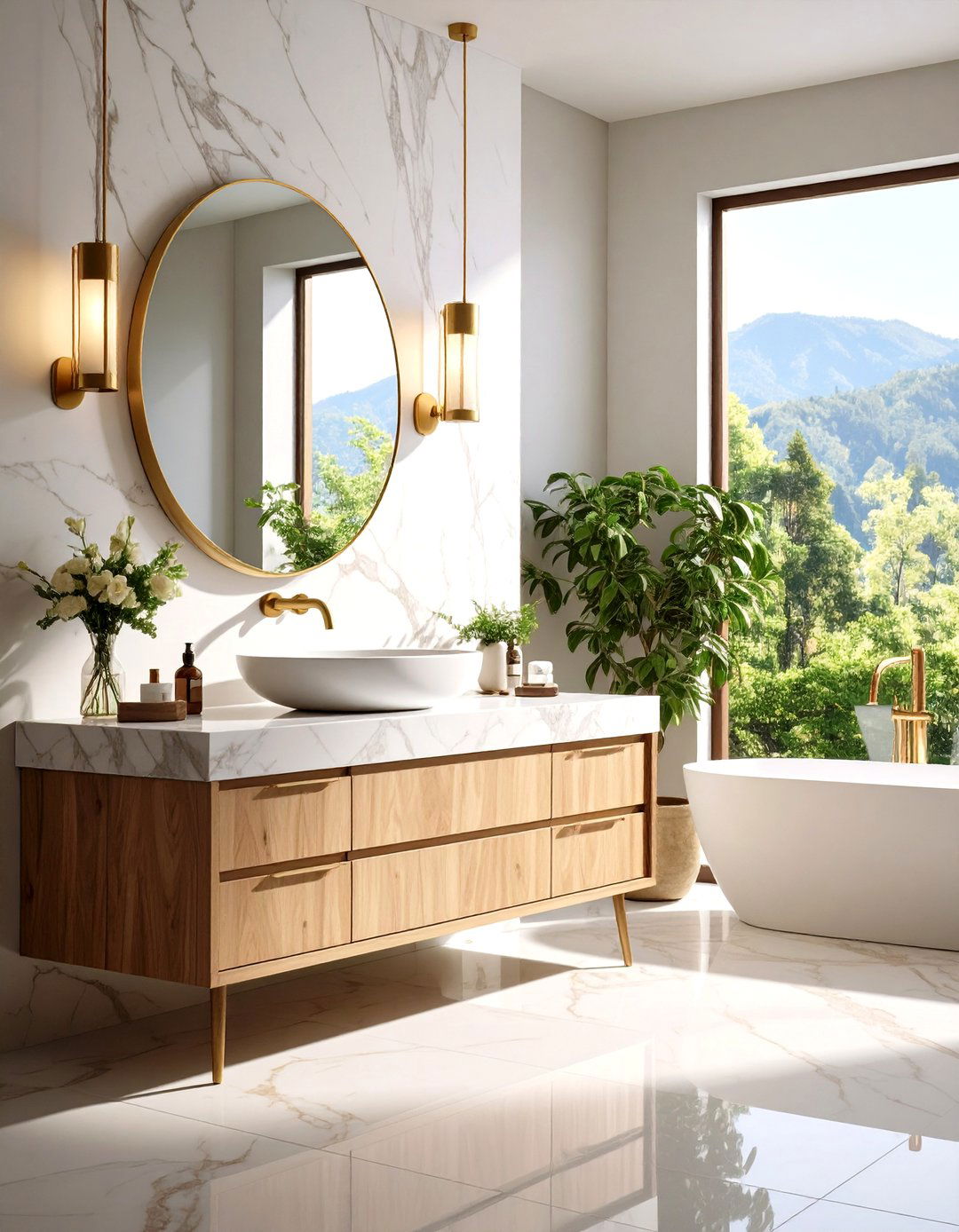
Transform bathrooms into spa-like retreats with natural stone vanities that showcase earth's artistry. Materials like marble, travertine, or granite provide both beauty and durability in wet environments. The unique veining patterns ensure each vanity becomes a one-of-a-kind focal point. Pair stone tops with wooden cabinetry for perfect organic modern balance. Undermount sinks maintain clean lines while brass fixtures add warm metallic accents. The substantial presence of stone creates luxury without ostentation. Natural variations in color and pattern provide visual interest that manufactured materials cannot replicate. These investments appreciate over time while delivering daily beauty and functionality that embodies organic modern principles.
12. Woven Textile Wall Hangings
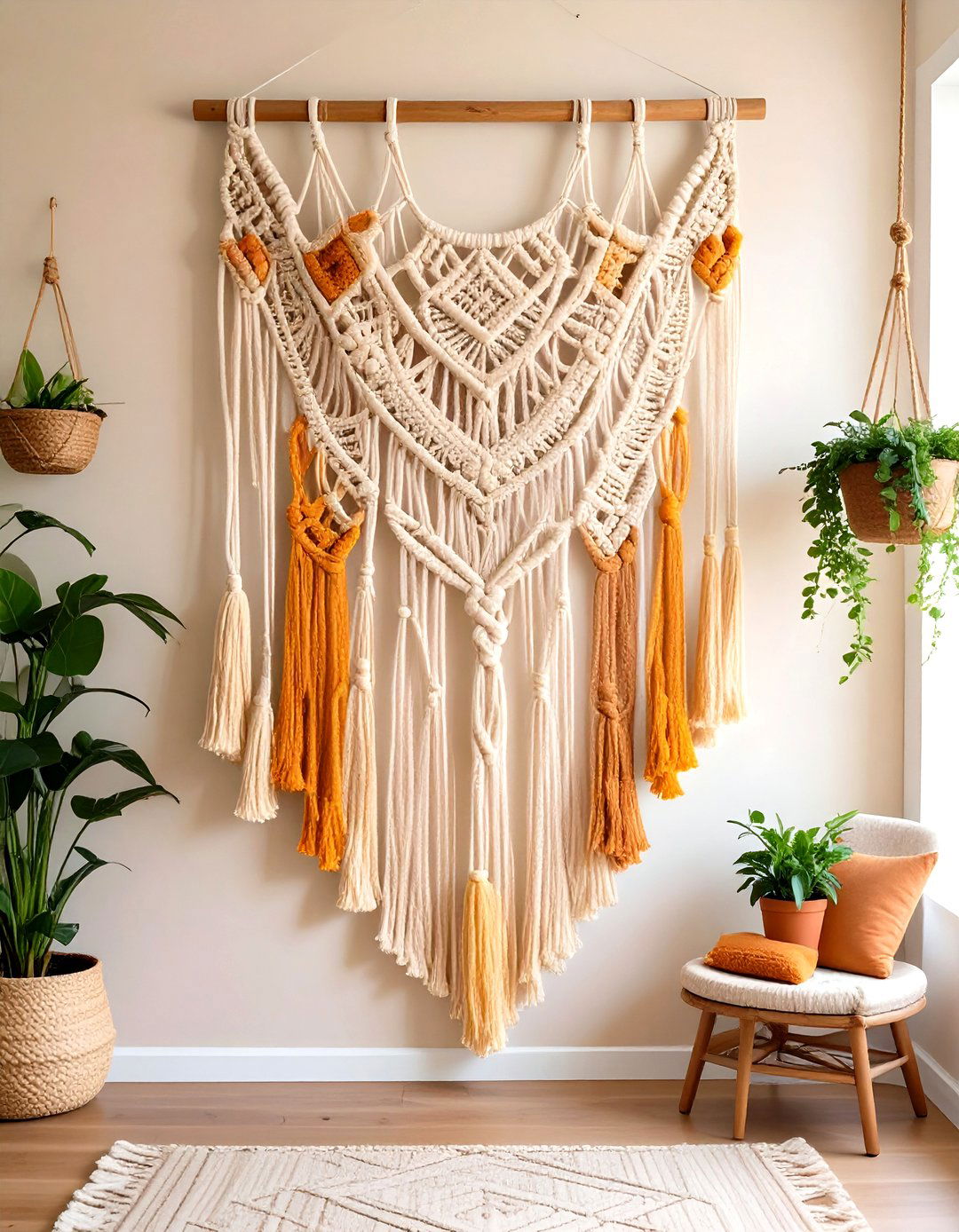
Add warmth and texture to walls through carefully selected woven textile art. Macramé, tapestries, or fiber art pieces introduce organic textures without overwhelming minimal spaces. Choose pieces in natural fibers like cotton, wool, or jute that complement the overall color palette. These handcrafted elements celebrate artisanal skills while adding visual warmth. The soft textures contrast beautifully with hard surfaces like stone or metal. Strategic placement behind seating areas or beds creates cozy focal points. Natural dyes and earth-tone colors maintain the cohesive aesthetic while adding personality. These affordable accessories allow for seasonal changes while supporting artisan communities and sustainable practices.
13. Open Shelving With Natural Materials
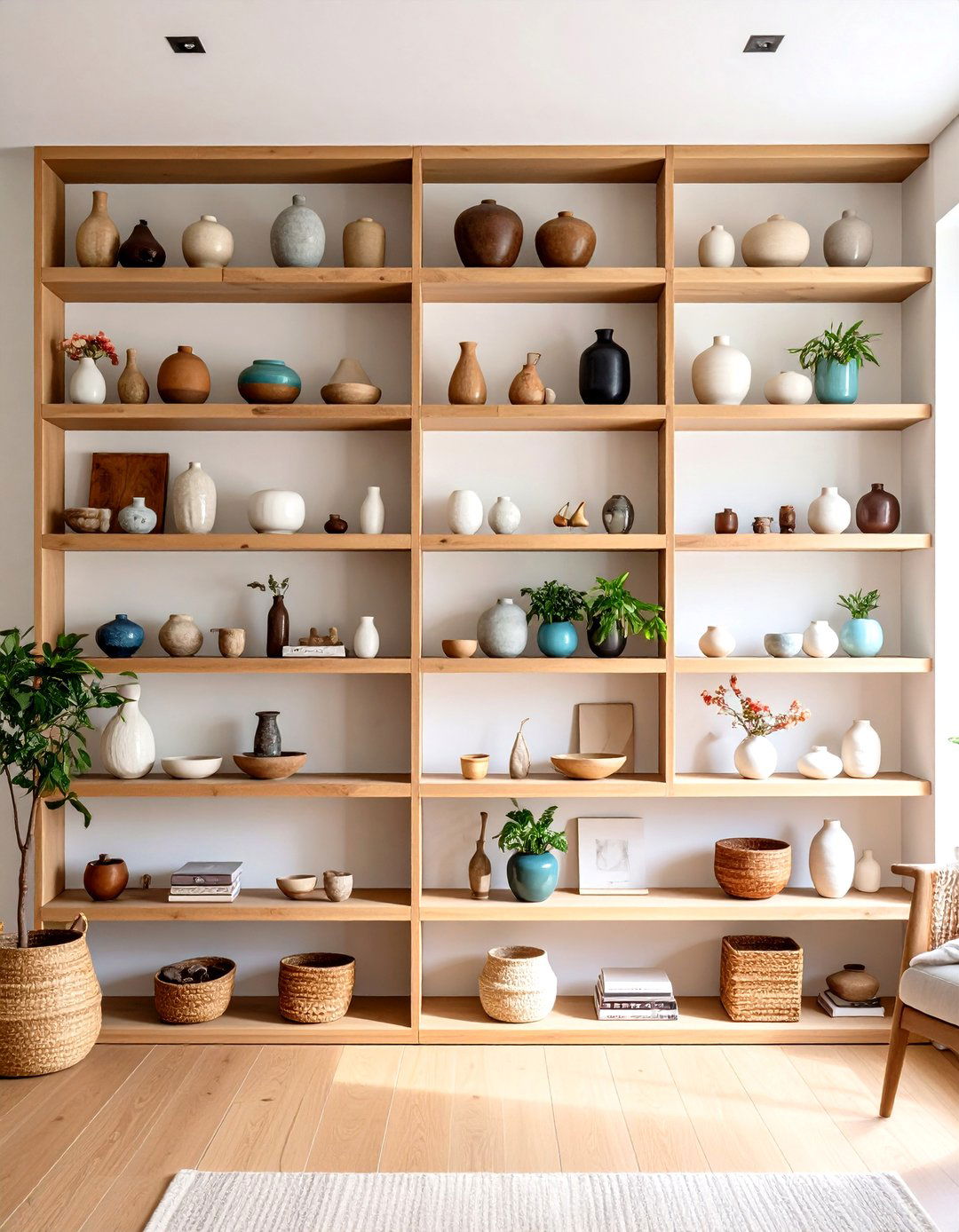
Display treasured objects on open shelving crafted from natural materials that celebrate organic beauty. Floating shelves in live-edge wood, stone brackets, or woven materials provide both function and aesthetic appeal. Arrange ceramic vessels, plants, and natural objects in asymmetrical compositions. The key lies in maintaining breathing space between objects while creating visual balance. Natural materials age beautifully, developing patina and character over time. These displays change seasonally as plants grow and objects shift. Mixed materials like wood and metal create visual interest while maintaining clean lines. Open shelving showcases personality while avoiding the visual weight of closed storage.
14. Curved Architectural Elements
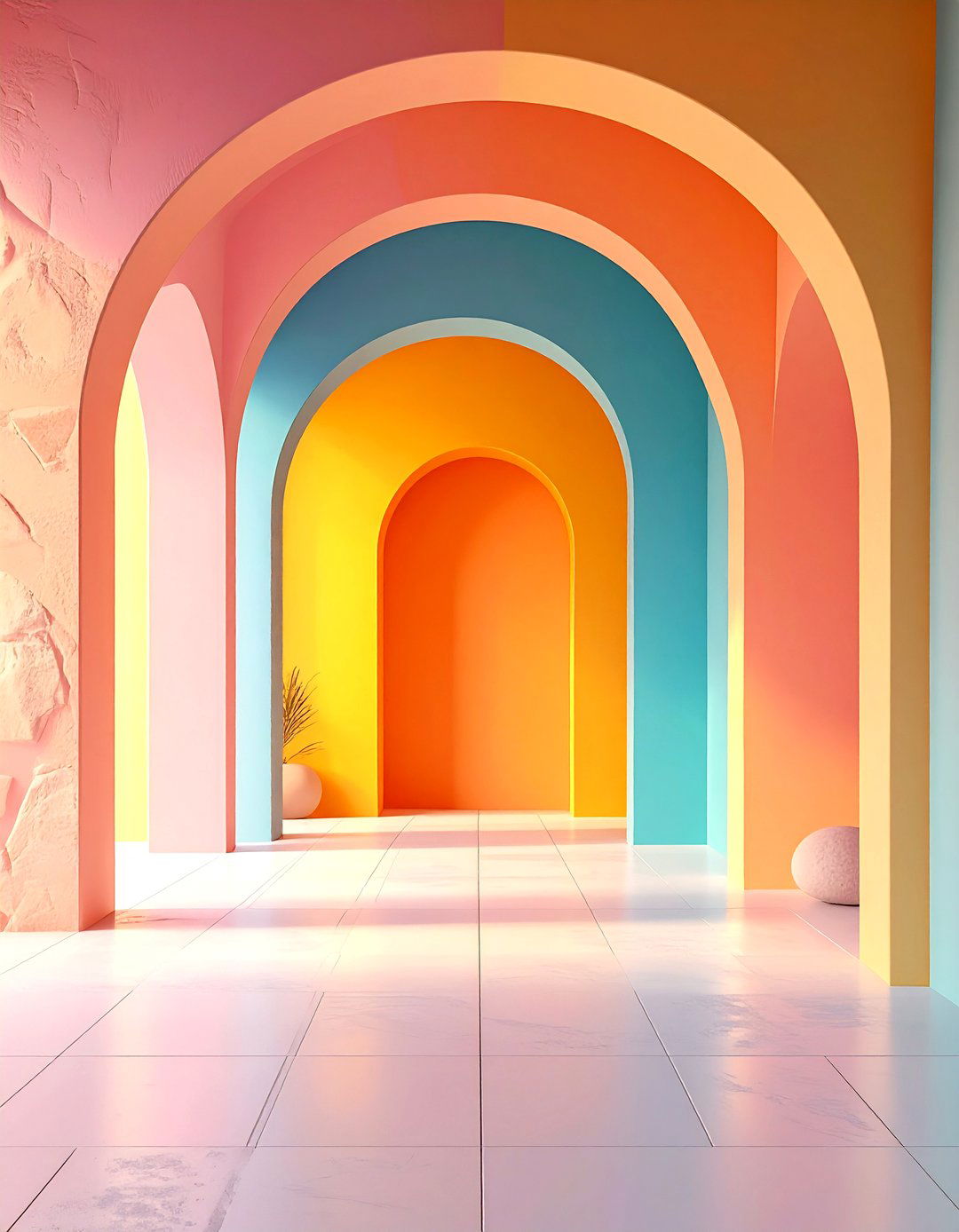
Can architectural curves truly soften modern spaces while maintaining sophisticated appeal? Definitely. Incorporate arched doorways, curved walls, or rounded windows to add organic flow. These permanent elements create dramatic impact while maintaining timeless appeal. Curved architecture improves traffic flow and creates interesting shadow patterns throughout the day. Consider partial curves like rounded corner walls or arched niches for subtle organic touches. These elements work particularly well in transitional spaces like hallways or entryways. The investment in curved architecture pays dividends through increased home value and daily visual pleasure. Professional installation ensures proper structural integrity while achieving the desired organic aesthetic.
15. Natural Wood Coffee Tables
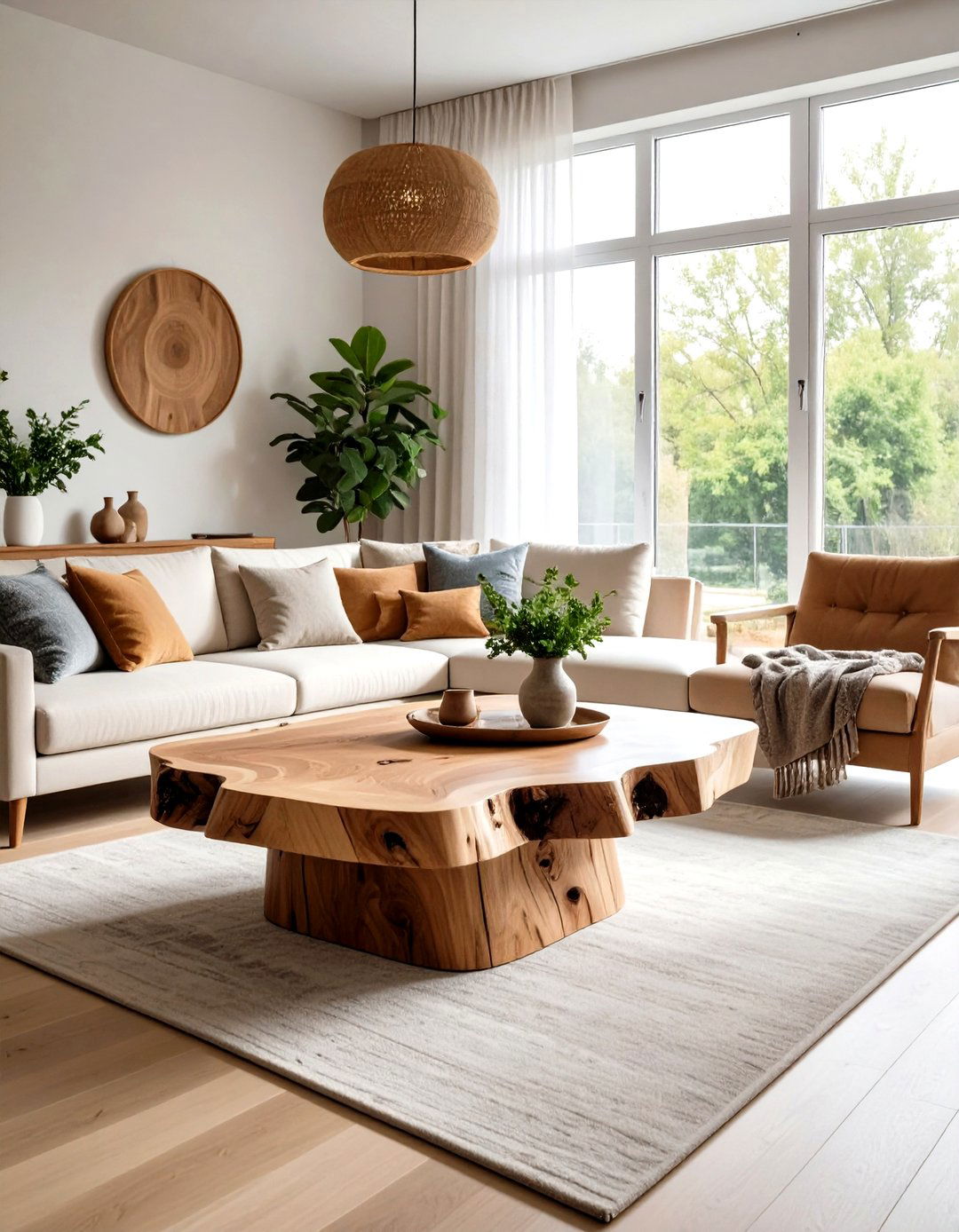
Anchor living spaces with coffee tables that celebrate wood's natural beauty and organic forms. Choose designs featuring live edges, unique grain patterns, or sculptural bases that showcase craftsmanship. Sustainable hardwoods like oak, walnut, or teak provide durability while supporting responsible forestry. The natural variations in wood grain create inherent artwork that never becomes boring. Pair wooden coffee tables with curved seating or neutral textiles for perfect organic modern balance. These central pieces ground seating areas while providing essential functionality. Hand-finished surfaces develop character over time, improving with age rather than degrading. Investment in quality wood furniture supports artisan craftspeople while creating lasting beauty.
16. Warm Metallic Accent Pieces
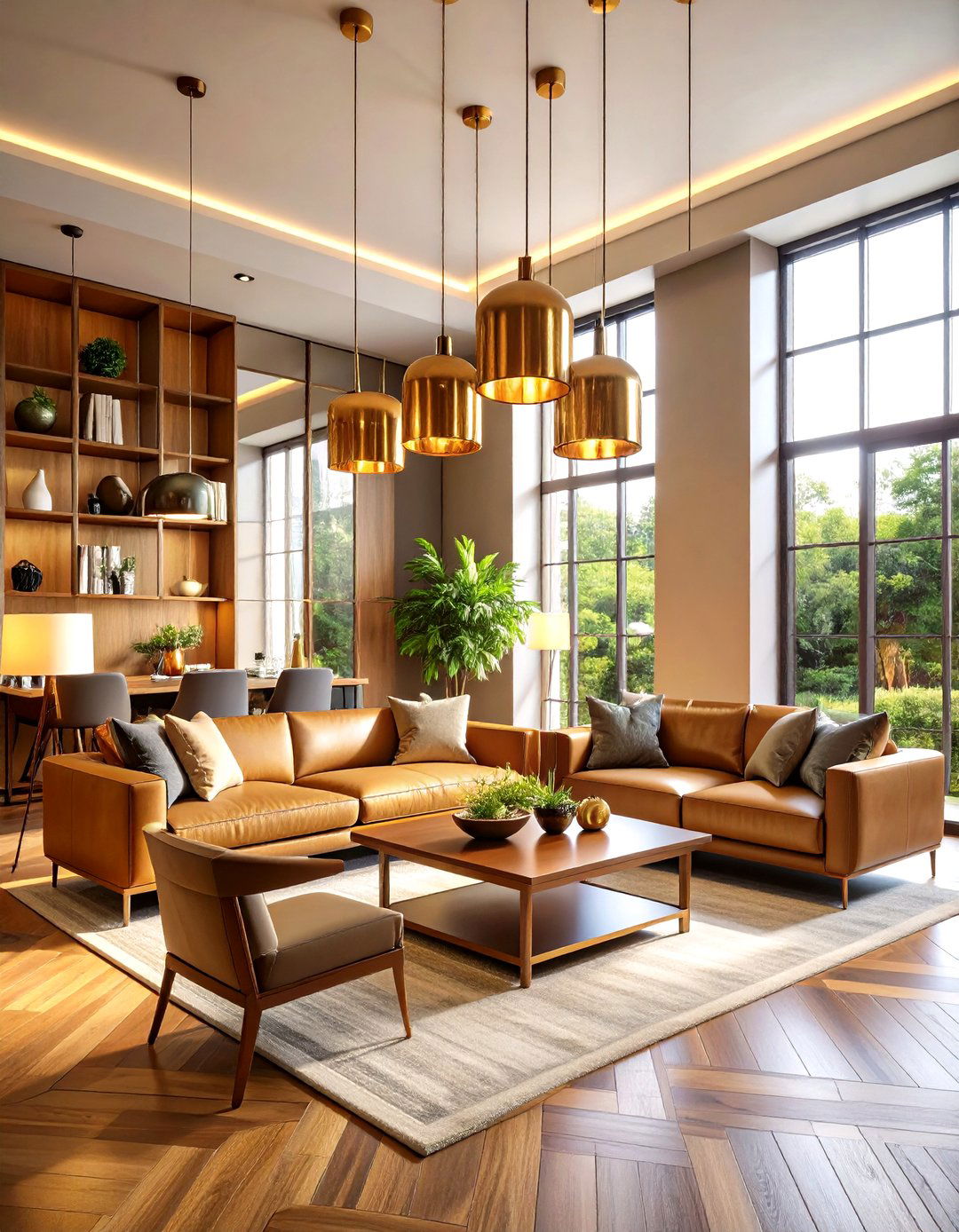
Introduce warm metallic accents through brass, copper, or bronze fixtures that complement organic materials beautifully. These metals develop natural patina over time, embracing the organic modern appreciation for authentic aging. Choose lighting fixtures, cabinet hardware, or decorative objects in warm metallic finishes. The golden tones add luxury without feeling ostentatious or cold. Mix metallic finishes thoughtfully, maintaining consistency within sight lines while allowing for subtle variations throughout the home. These accents bridge natural materials with modern functionality. Brushed or matte finishes feel more organic than highly polished surfaces. Strategic placement of metallic elements creates visual continuity while adding sophisticated warmth.
17. Organic Modern Bathrooms
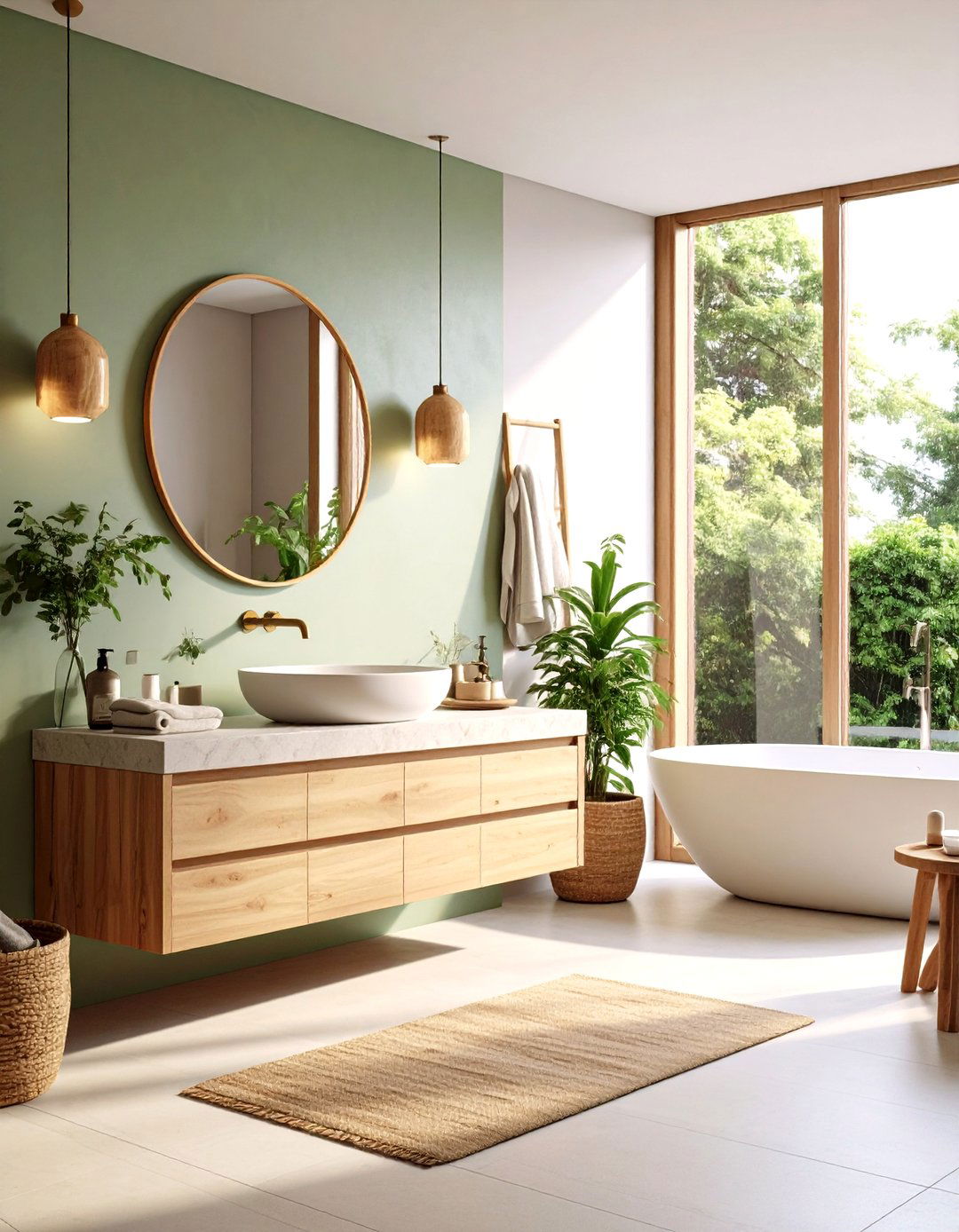
How can bathrooms embrace organic modern principles while maintaining essential functionality? Start with natural stone or wood vanities paired with vessel sinks in ceramic or stone. Add textural elements through woven baskets, natural fiber bath mats, and wooden accessories. Large windows or skylights maximize natural light while plants thrive in humid conditions. Choose fixtures in warm metallic finishes that complement natural materials. Freestanding tubs create sculptural focal points while maintaining clean lines. Natural materials like teak shower benches add spa-like luxury. The key lies in balancing hard surfaces with soft textures while maintaining the clean, uncluttered aesthetic essential to organic modern design principles.
18. Minimalist Plant Displays
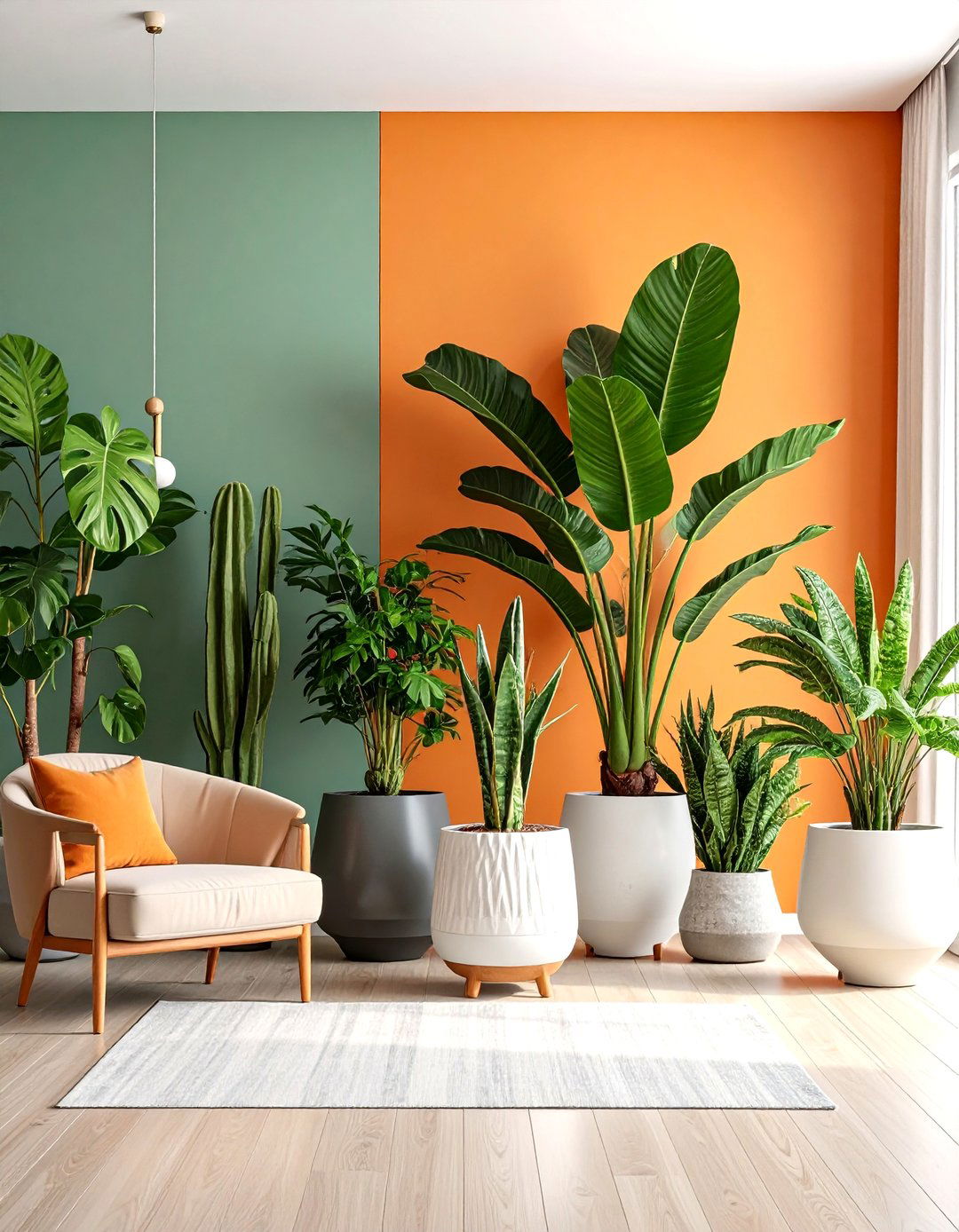
Create serene green vignettes that enhance rather than overwhelm organic modern spaces. Choose planters in natural materials like ceramic, stone, or woven fibers that complement the overall aesthetic. Group plants in odd numbers with varying heights for visual interest. Select plants with architectural forms like snake plants or fiddle leaf figs that complement clean modern lines. The restraint in plant selection maintains the minimalist foundation while adding essential life and color. Strategic placement near windows maximizes natural light benefits. These living sculptures change seasonally, providing dynamic beauty throughout the year. Simple plant displays celebrate nature without creating visual chaos.
19. Neutral Color Layering
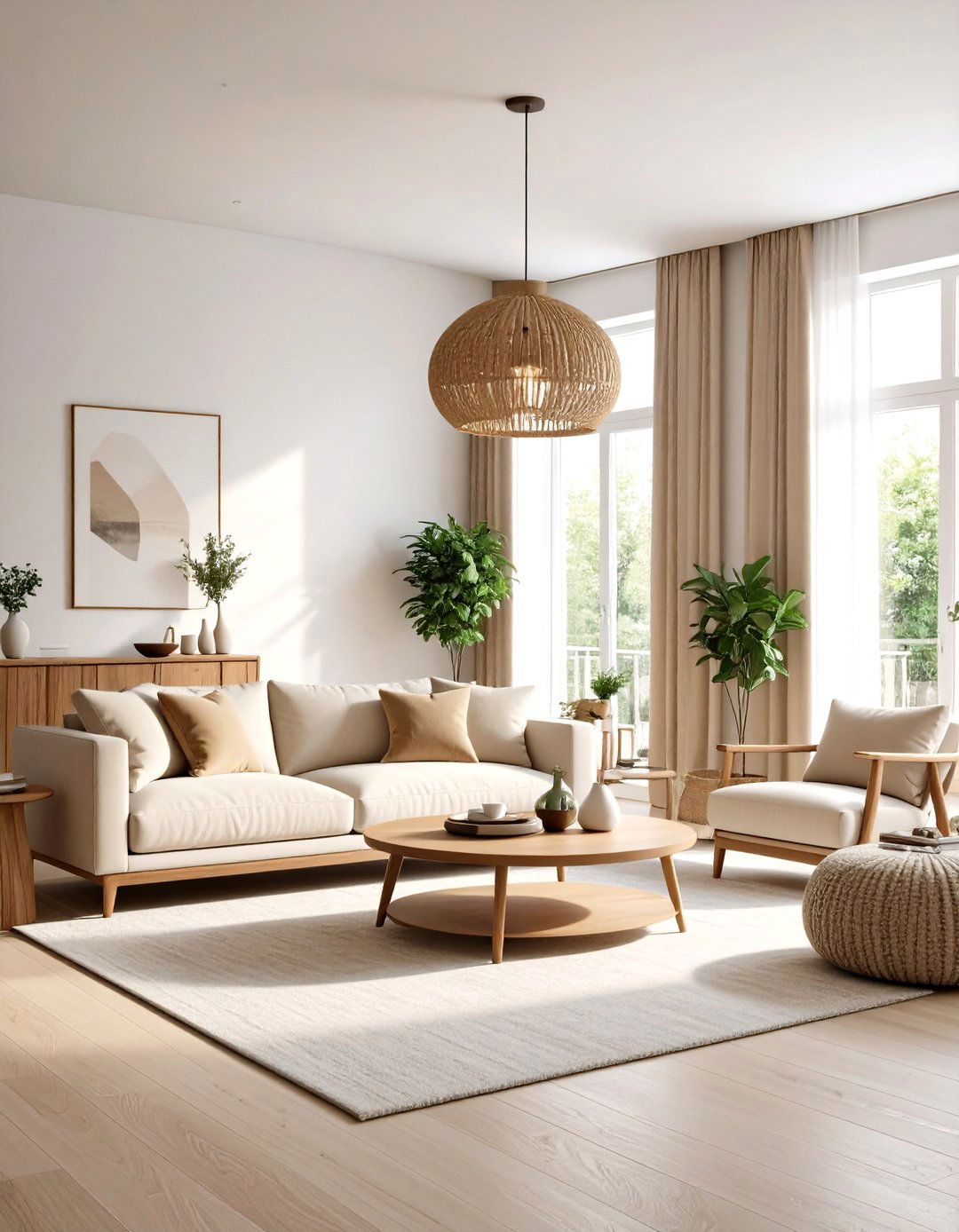
Master the art of layering neutral tones to create depth without introducing busy patterns or bold colors. Start with warm white walls and layer in beige, taupe, sage, and cream through furniture and accessories. The subtle variations in tone create visual interest while maintaining serenity. Natural materials provide texture variations that prevent neutral spaces from feeling flat. Consider the undertones in each color choice to ensure harmonious blending. Seasonal changes through textiles allow for subtle shifts while maintaining the core palette. These sophisticated color relationships create timeless appeal that won't date quickly. The restraint in color choice allows natural materials and architectural elements to shine.
20. Handcrafted Ceramic Accessories
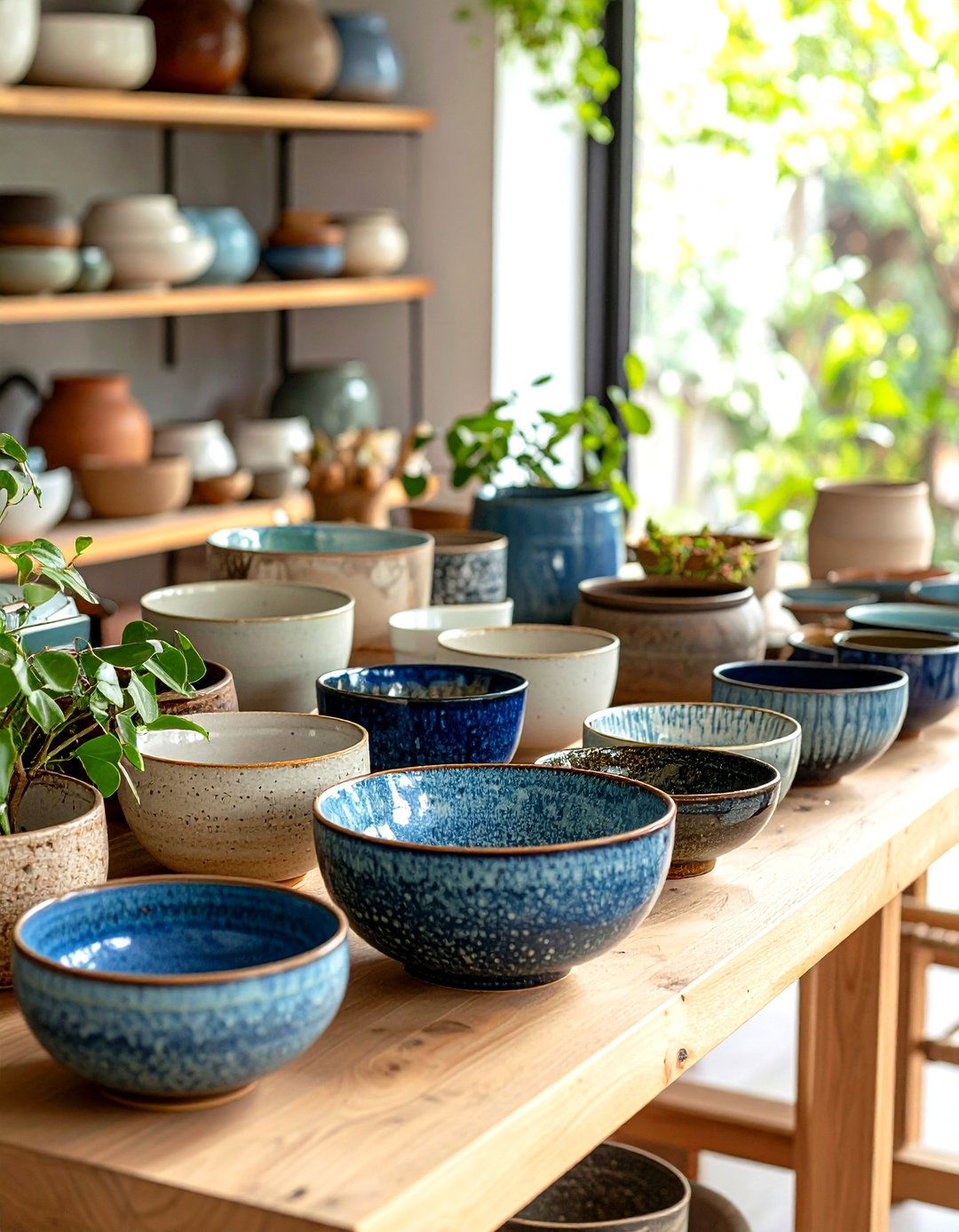
Celebrate artisanal craftsmanship through handcrafted ceramic accessories that add personality without overwhelming clean spaces. Choose vessels, bowls, and decorative objects in earth tones that complement the natural palette. The imperfections and variations in handmade pieces embrace organic modern's appreciation for authentic beauty. These accessories provide opportunities to support local artisans while adding unique character. Natural glazes and textures connect to the earth while maintaining sophisticated appeal. Group ceramic pieces in odd numbers with varied heights for visual balance. Seasonal rotation keeps displays fresh while maintaining the minimalist foundation. These affordable accent pieces allow for personal expression within the restrained aesthetic framework.
21. Natural Light Maximization
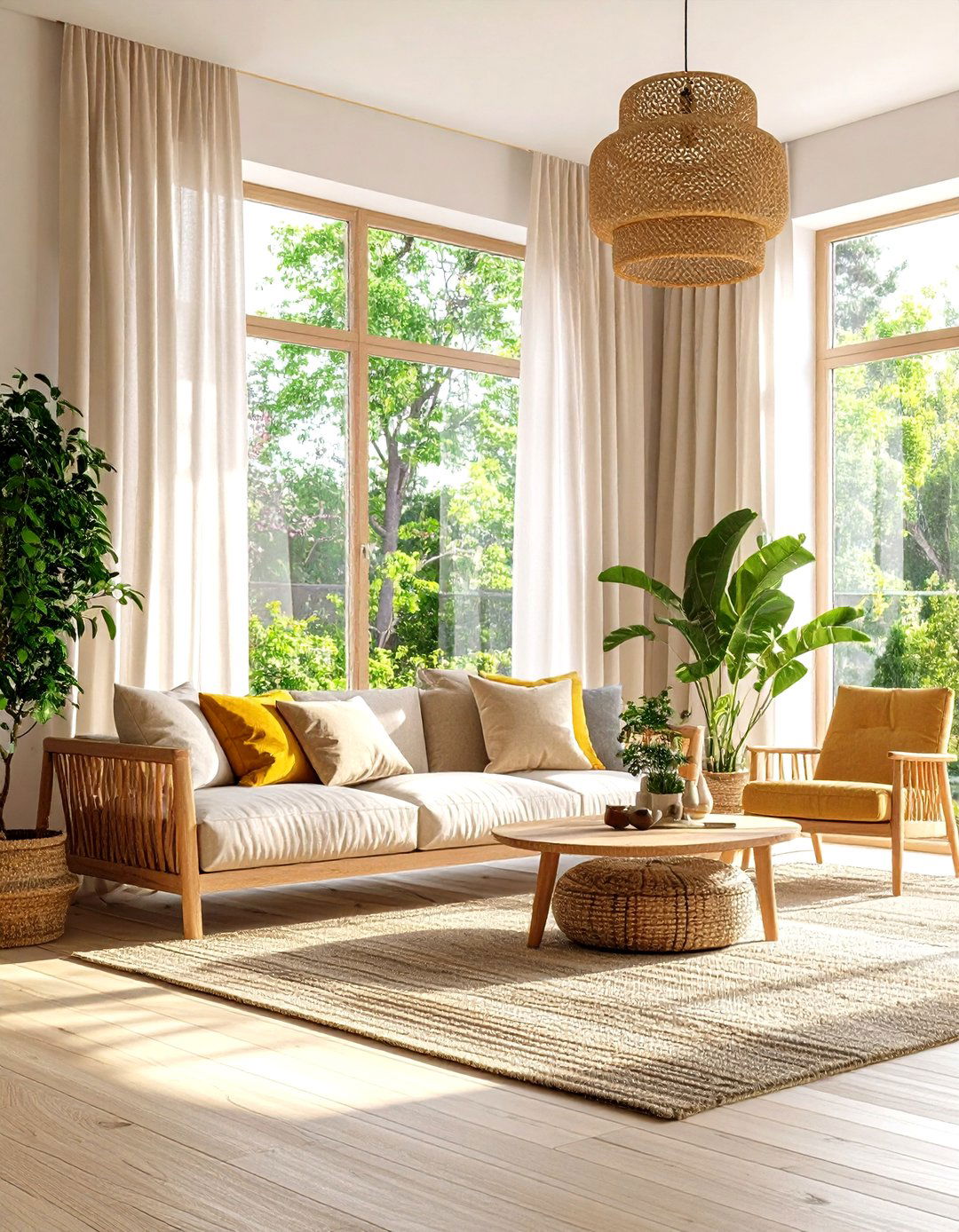
Can strategic natural light placement transform your organic modern space into a glowing sanctuary? Absolutely. Remove heavy window treatments in favor of sheer linen panels or natural woven shades that filter light gently. Strategic mirror placement amplifies available light while maintaining clean wall surfaces. Consider skylights or larger windows during renovations to increase natural illumination. The goal is creating bright, airy spaces that feel connected to outdoor environments. Light-colored natural materials reflect and distribute light throughout spaces. Clerestory windows add light without compromising privacy. Natural light reduces dependence on artificial illumination while enhancing the beauty of natural materials and textures throughout your home.
22. Sustainable Material Choices
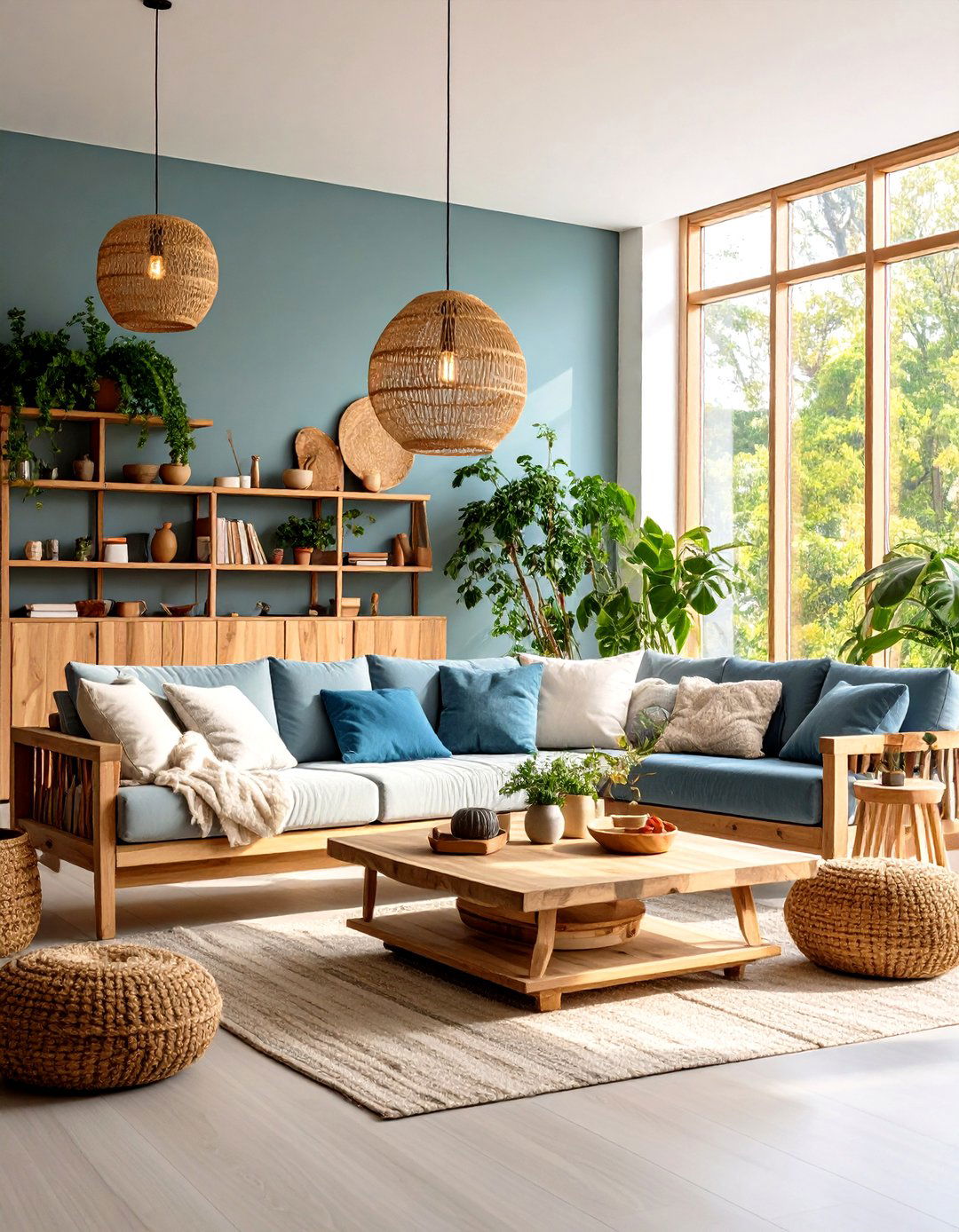
Prioritize environmentally responsible materials that align with organic modern's earth-conscious values. Choose reclaimed wood, recycled metals, and sustainably harvested natural fibers for furniture and accessories. These choices reduce environmental impact while adding authentic character and history. Sustainable materials often feature the imperfections and variations that enhance organic appeal. Local sourcing reduces transportation impacts while supporting regional artisans and businesses. Energy-efficient lighting and appliances complement the natural material palette while reducing ongoing environmental costs. The investment in sustainable choices pays long-term dividends through durability and timeless appeal. Responsible material selection demonstrates commitment to environmental stewardship while creating beautiful, healthy living spaces.
23. Tactile Texture Combinations
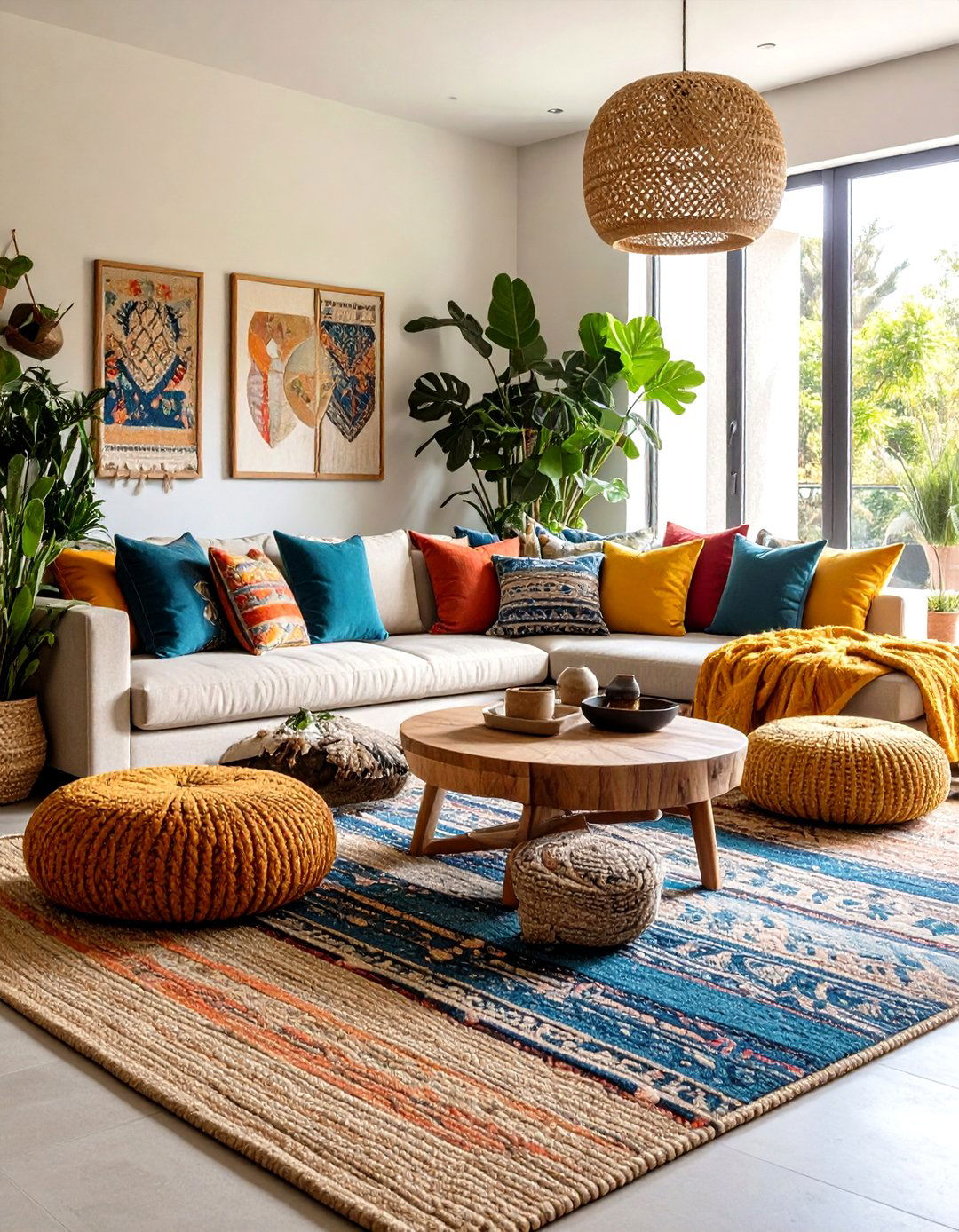
Layer diverse textures to create sensory richness within the neutral color palette framework. Combine smooth surfaces like polished stone with rough textures like jute or raw wood. The contrast between materials creates visual and tactile interest without relying on bold colors or patterns. Soft textiles like wool throws soften hard surfaces while maintaining the sophisticated aesthetic. Natural material combinations feel inherently harmonious because they originate from the same earth sources. Seasonal textile changes allow for subtle shifts while maintaining the core material palette. These texture relationships create depth and interest that prevents neutral spaces from feeling bland or sterile.
24. Organic Modern Outdoor Integration

Blur the boundaries between indoor and outdoor spaces through seamless organic modern design transitions. Use similar materials and color palettes on patios and terraces that connect to interior spaces. Large sliding doors or floor-to-ceiling windows create visual flow between environments. Natural stone or wood decking materials extend interior flooring choices outdoors. Weather-resistant furniture in organic shapes maintains aesthetic continuity while providing functional outdoor living. Container gardens and outdoor planters create green connections that enhance both spaces. The integration of indoor and outdoor environments maximizes living space while strengthening the connection to nature that defines organic modern design philosophy.
Conclusion:
Organic modern interior design offers a timeless approach to creating homes that nurture both aesthetic sensibilities and environmental consciousness. By thoughtfully combining clean contemporary lines with nature's inherent beauty, this style achieves the perfect balance between sophistication and comfort. The emphasis on natural materials, sustainable choices, and biophilic elements creates spaces that feel both current and enduring. Whether you implement a few organic modern elements or embrace the full aesthetic, these design principles will transform your home into a serene sanctuary that celebrates the beauty of the natural world while maintaining the functionality essential to modern living.


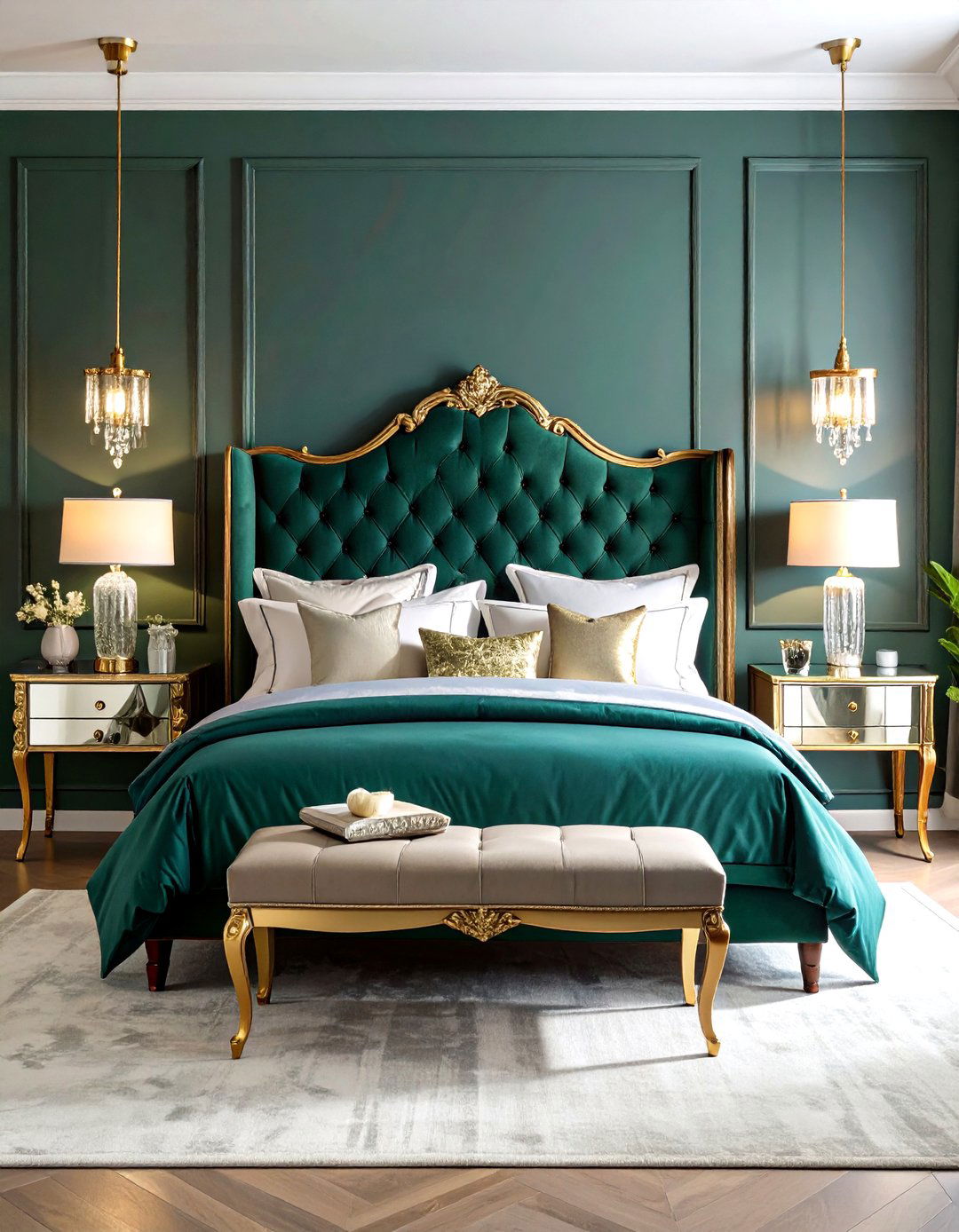
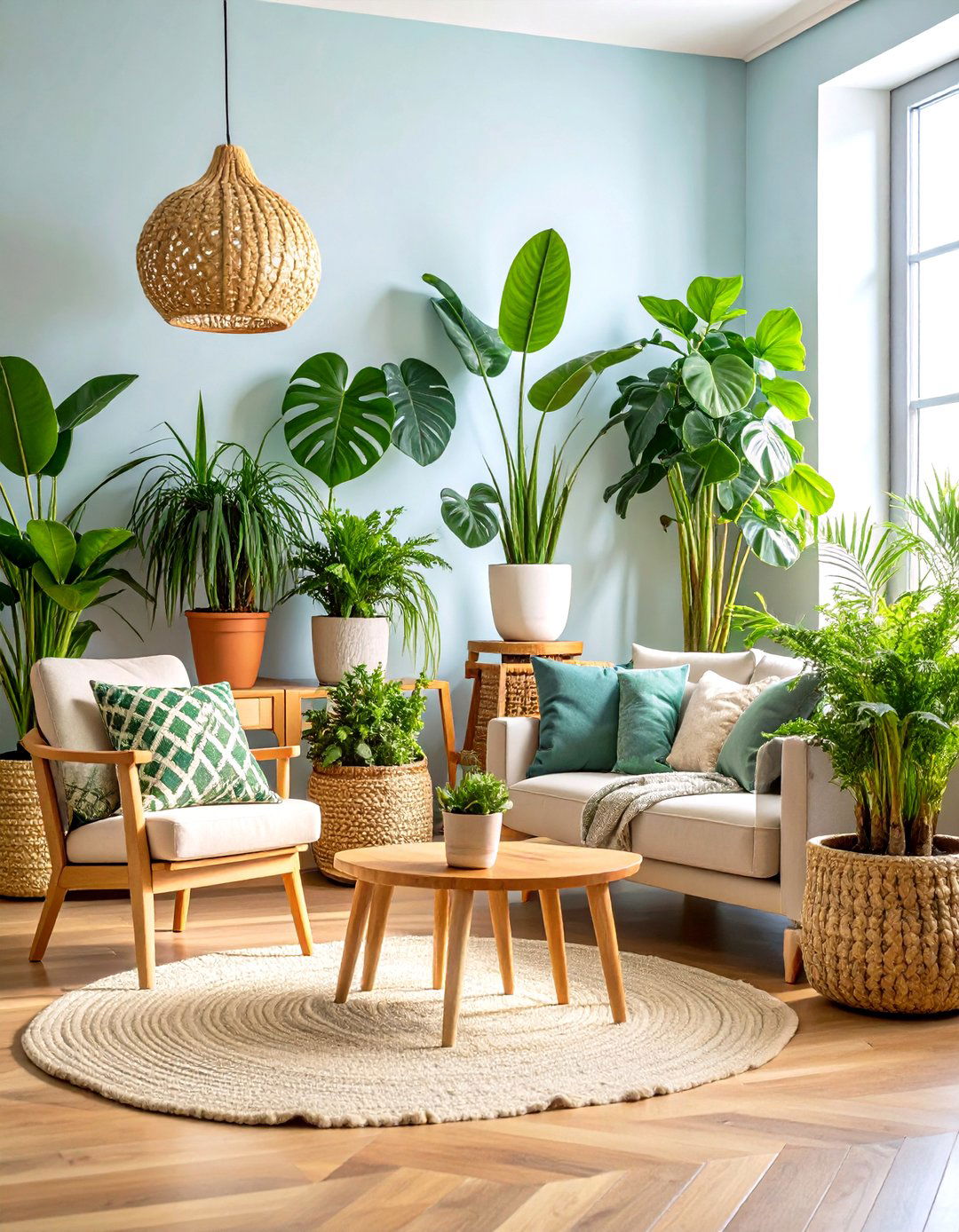
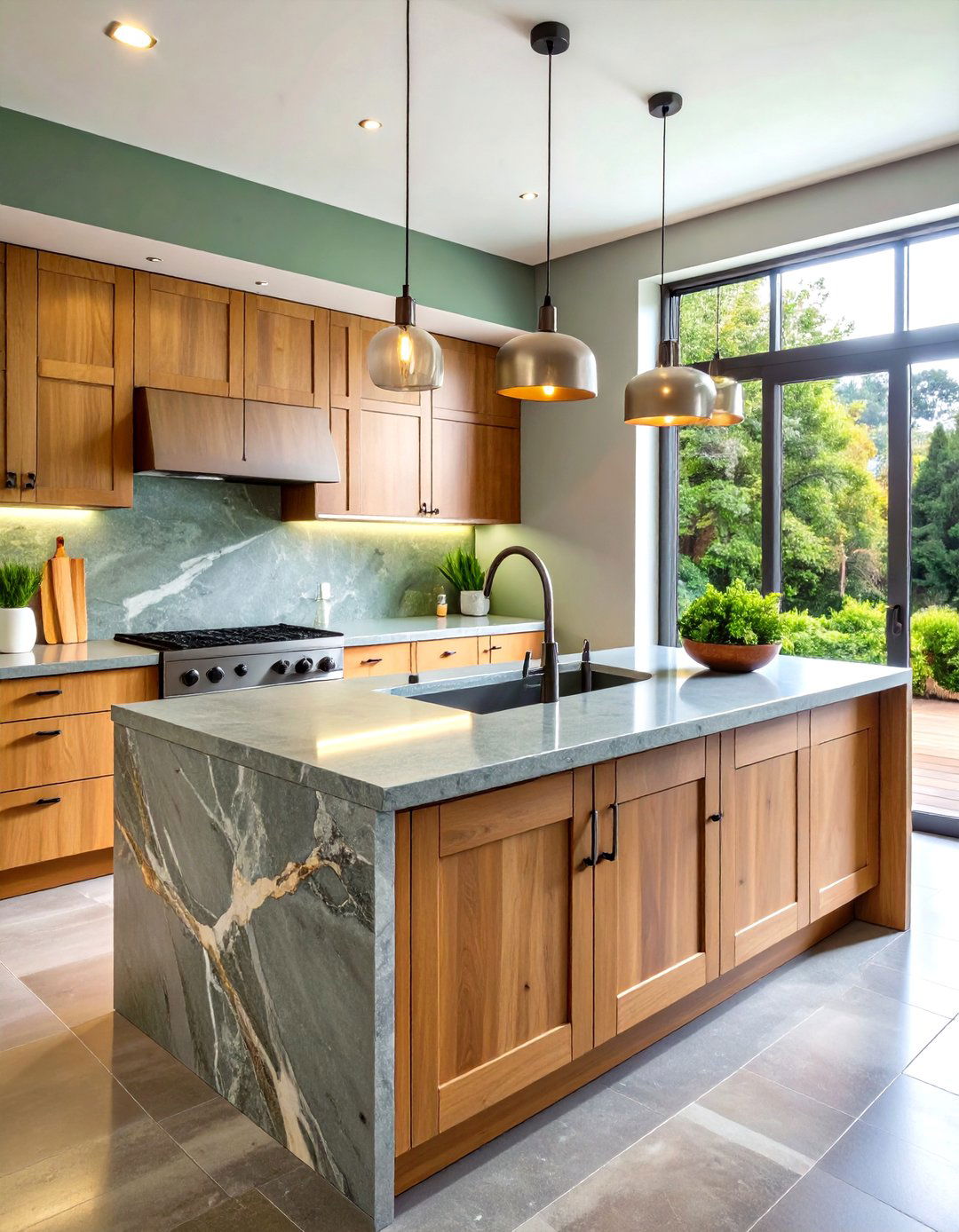
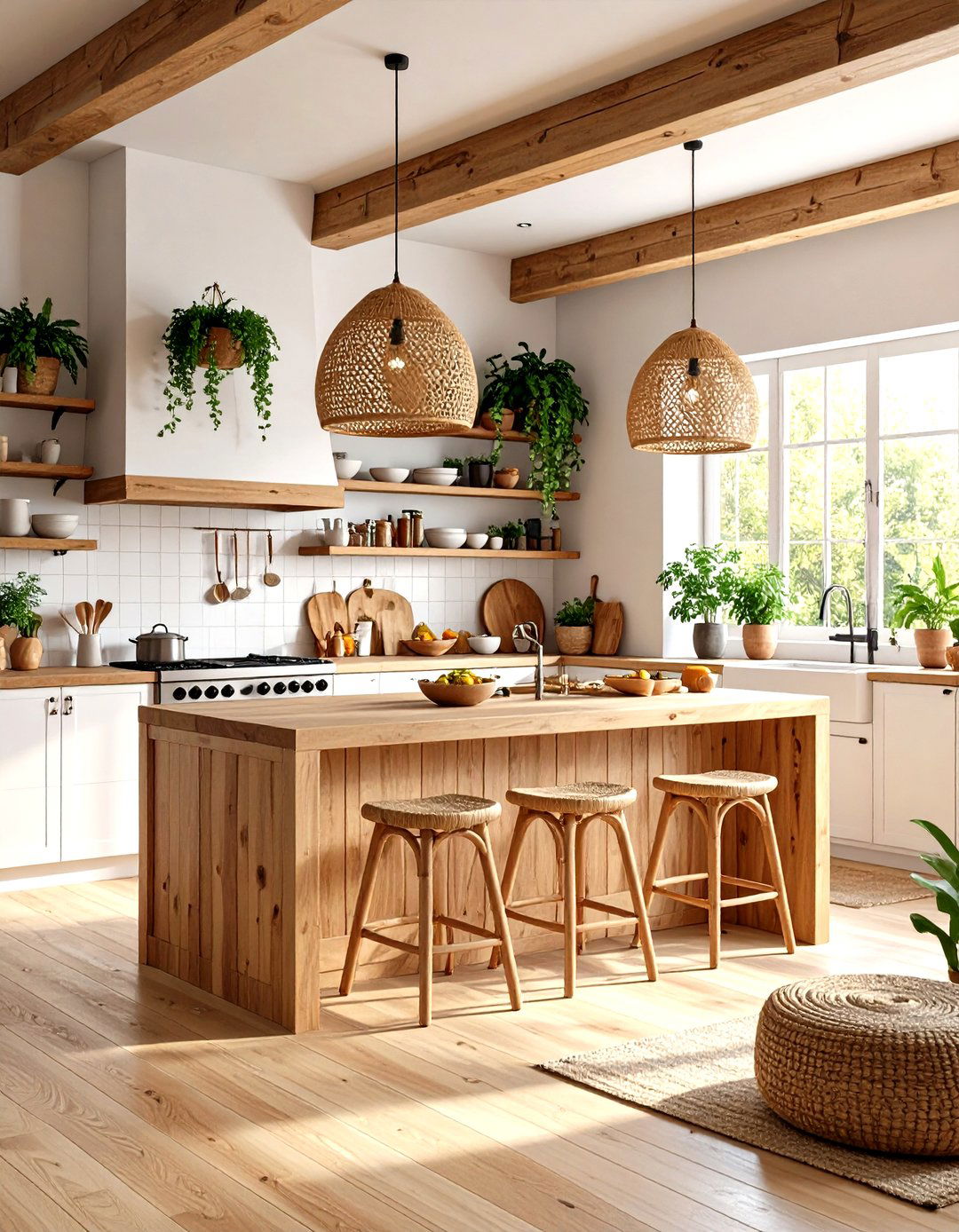

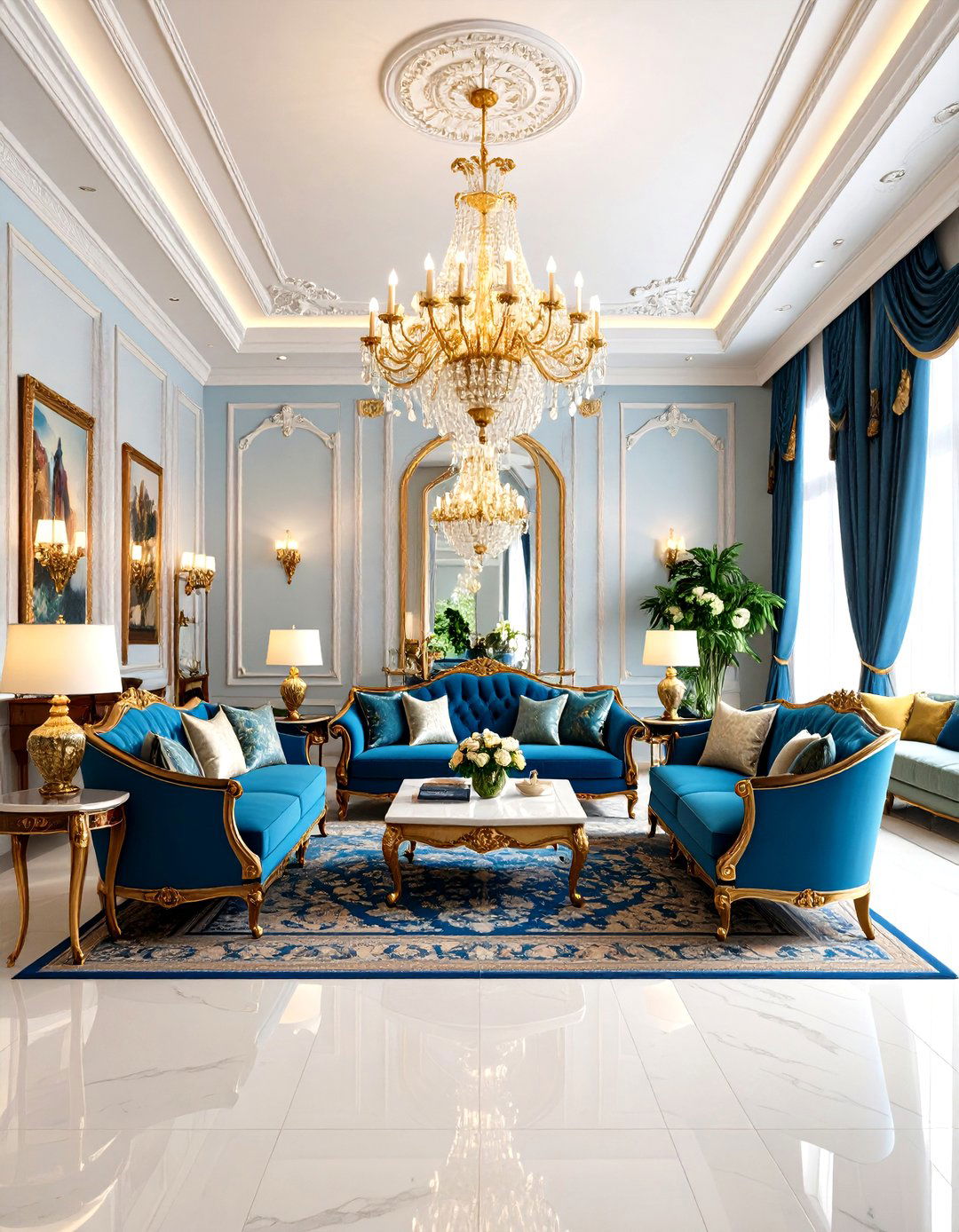
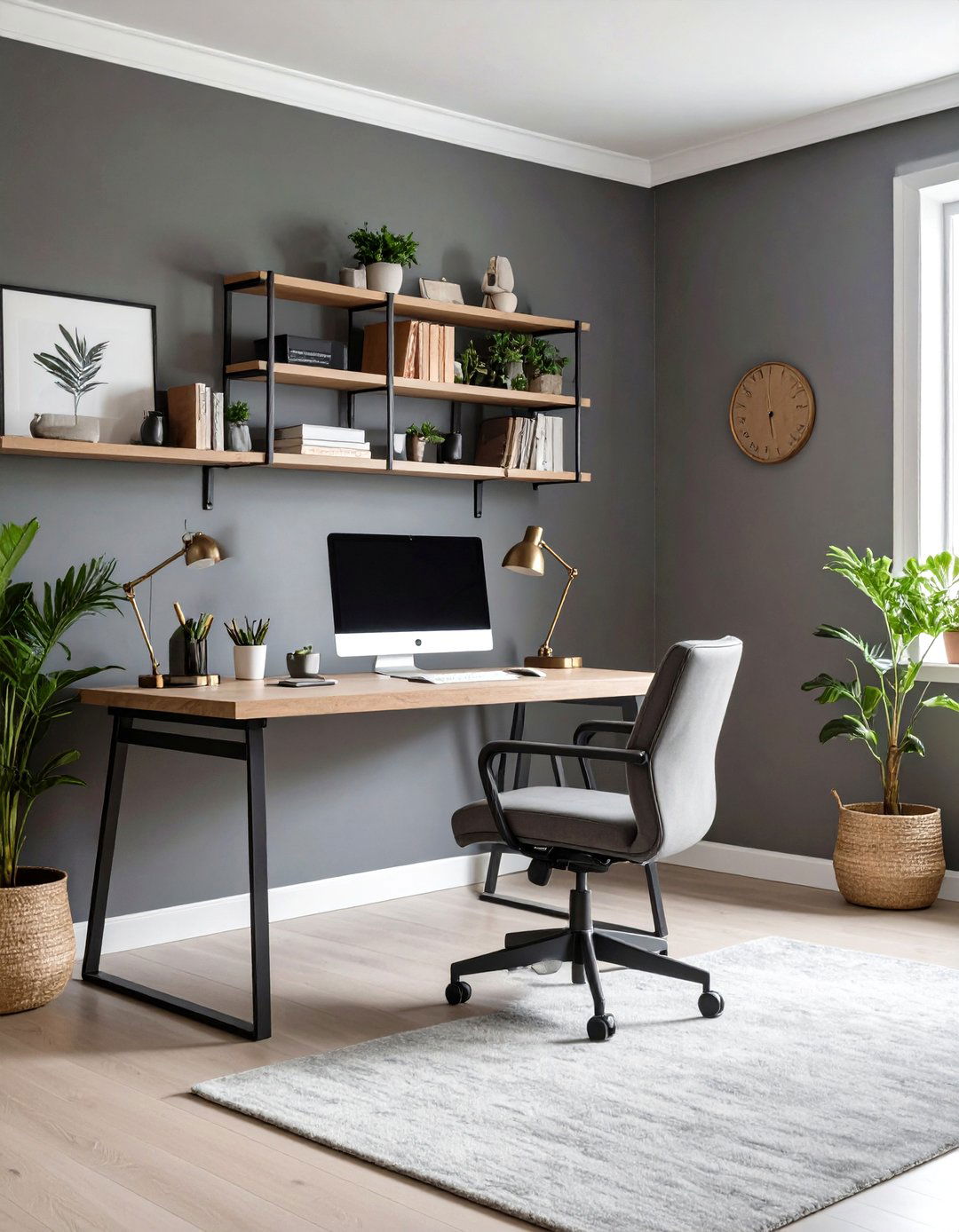
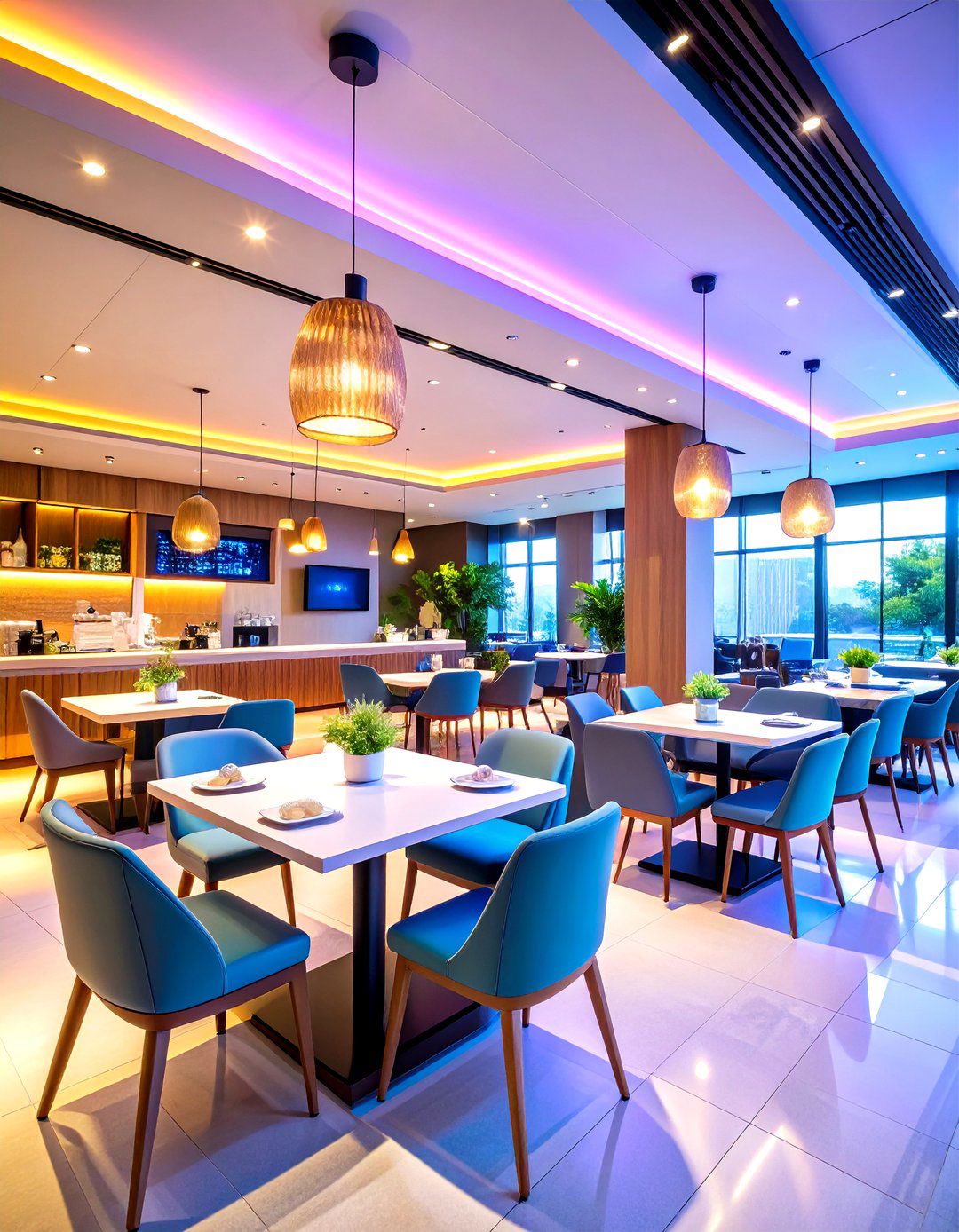
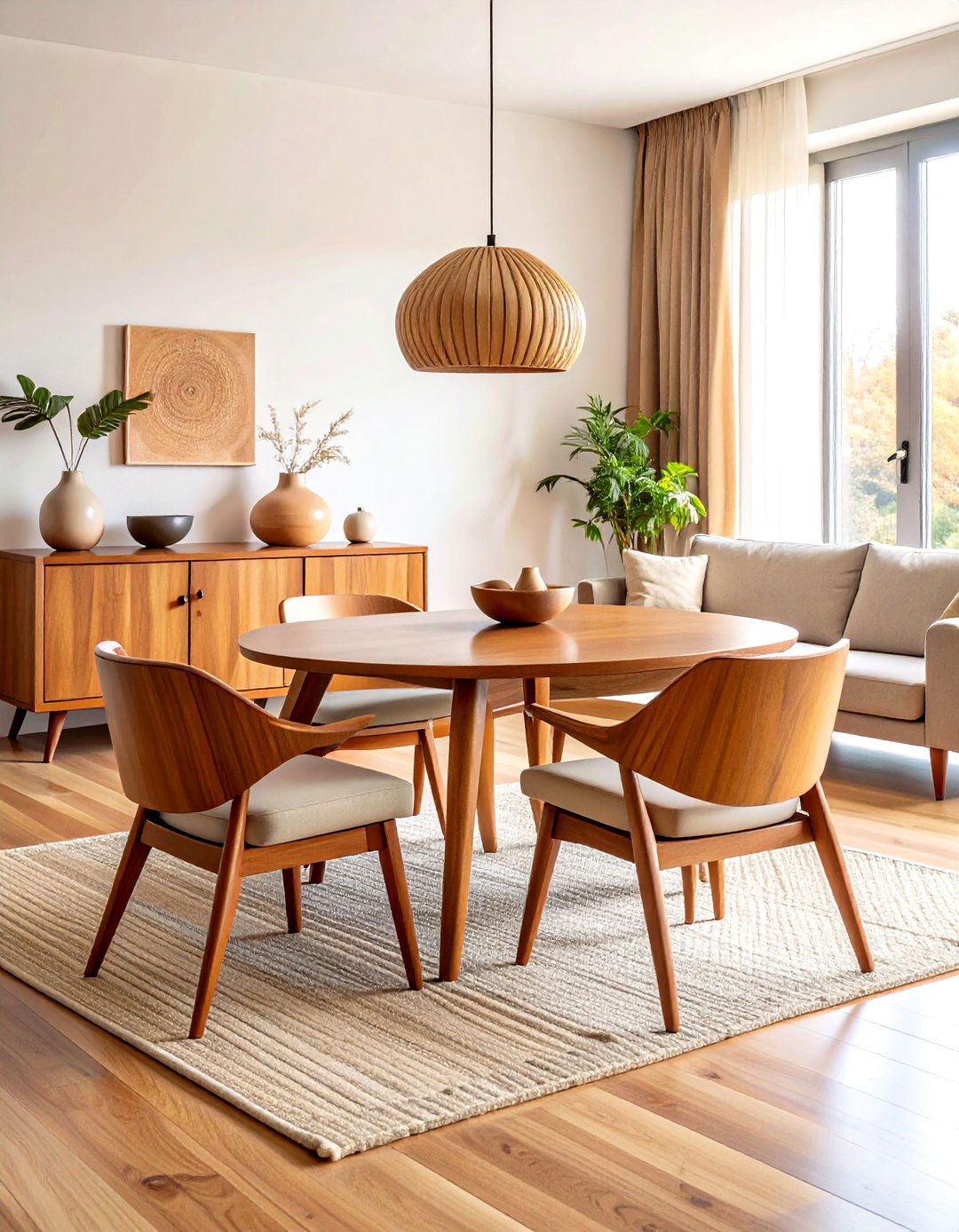
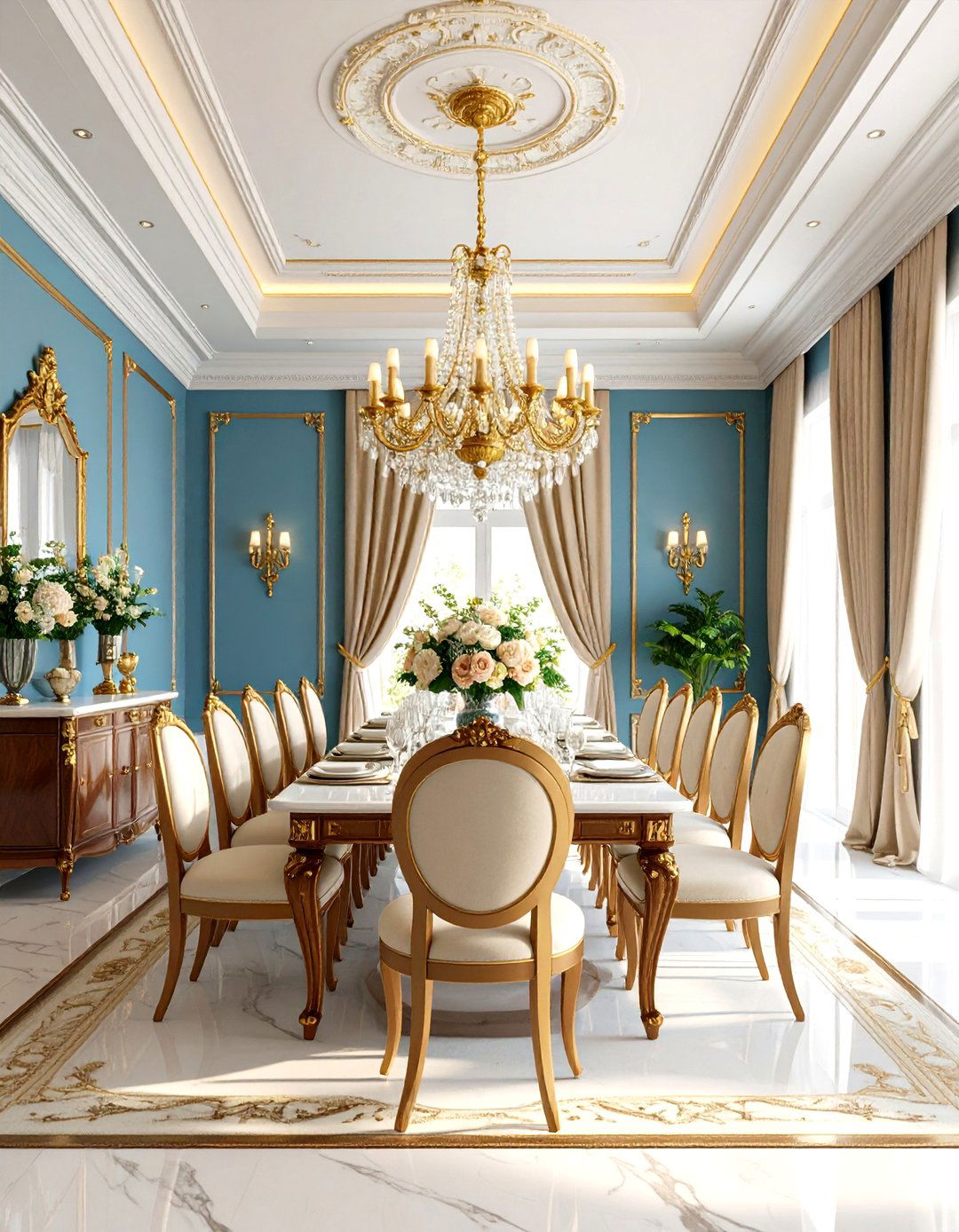
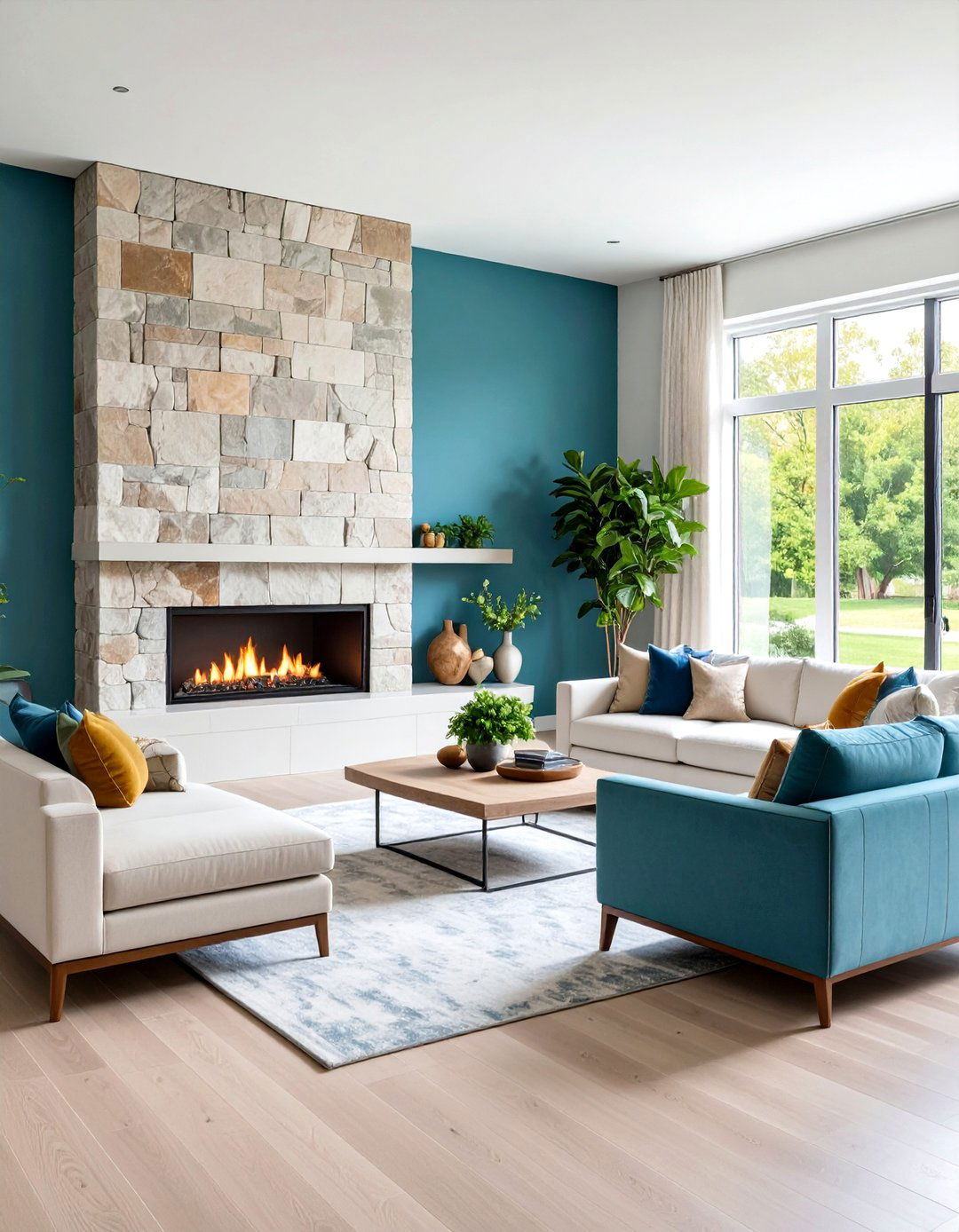


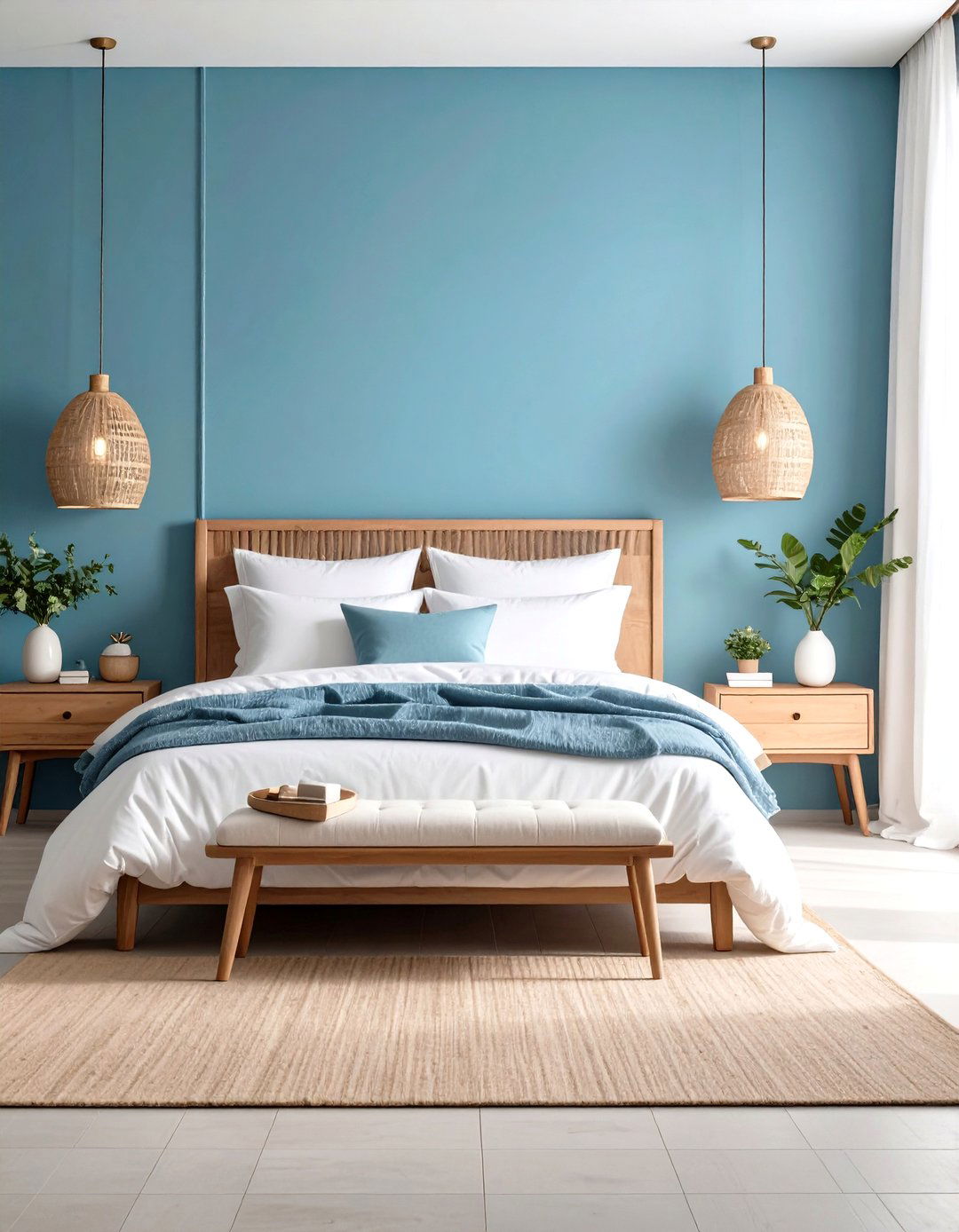
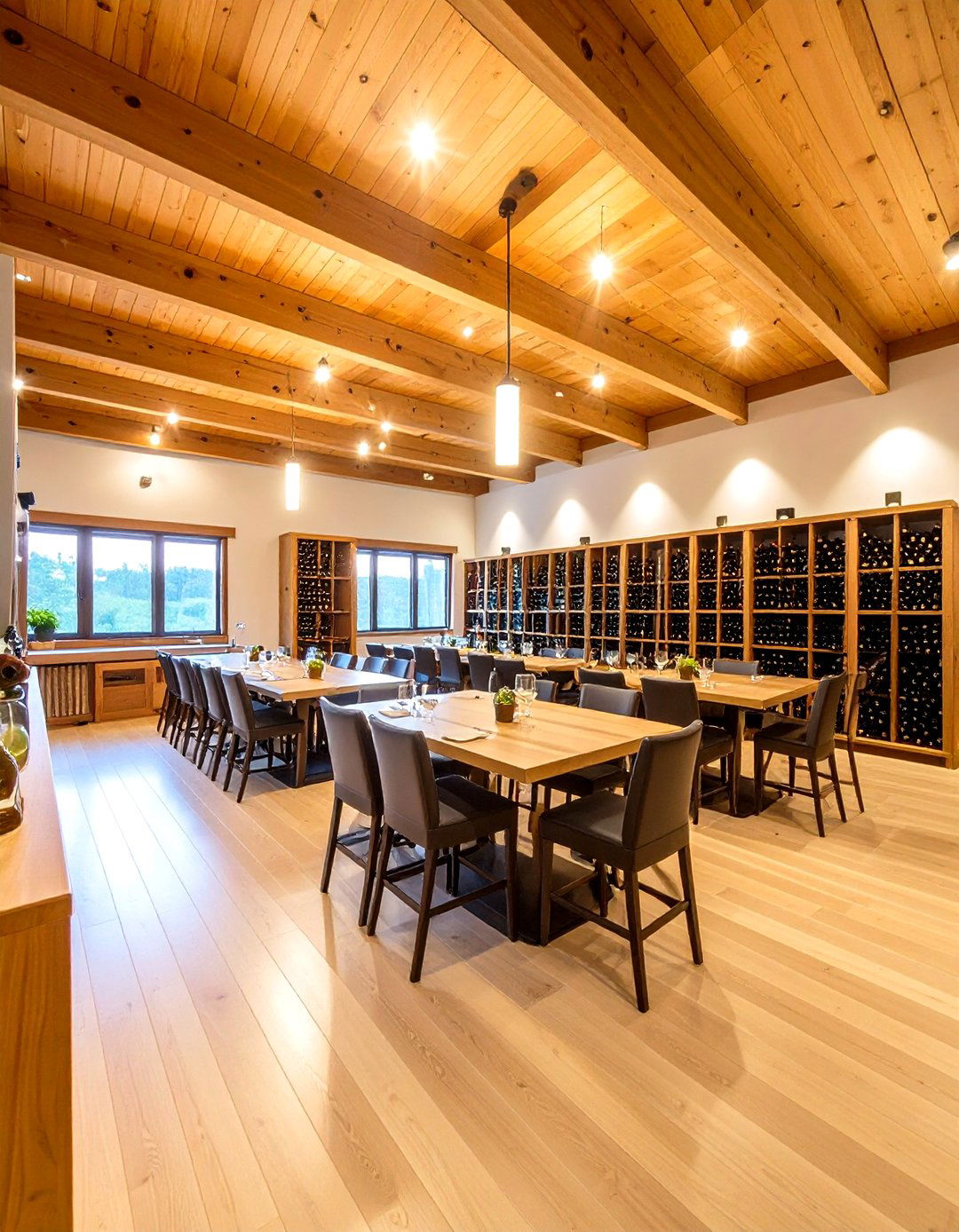
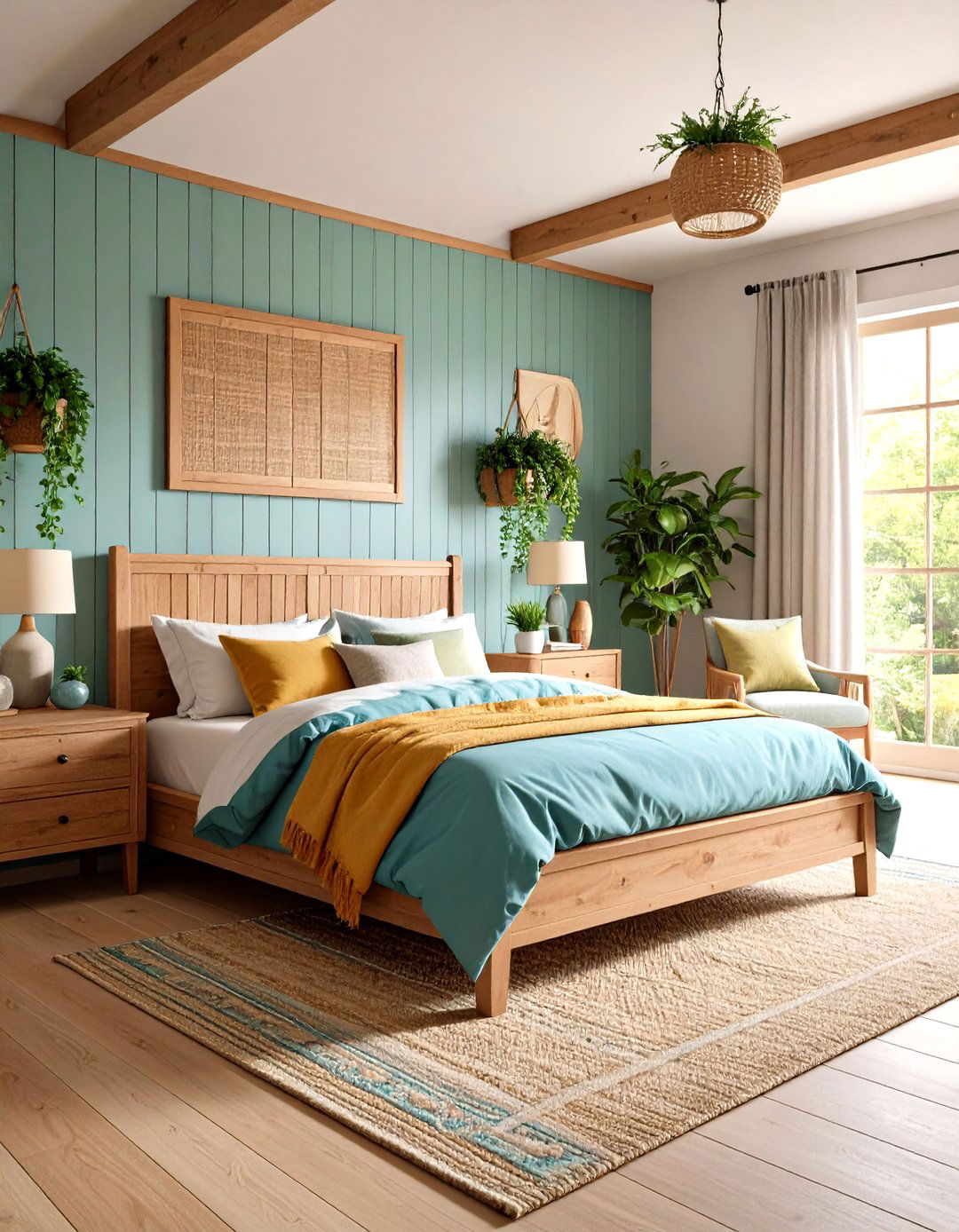
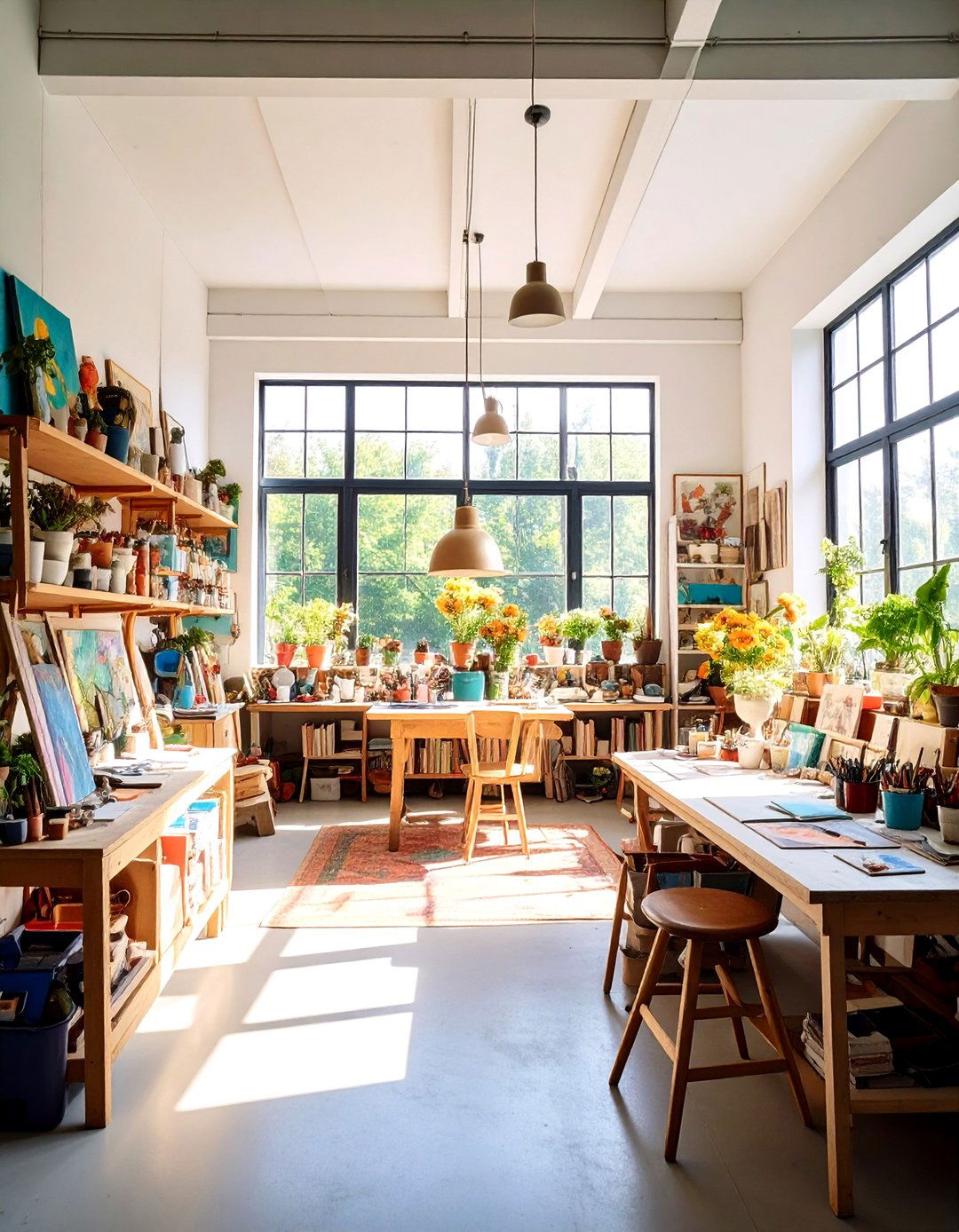

Leave a Reply